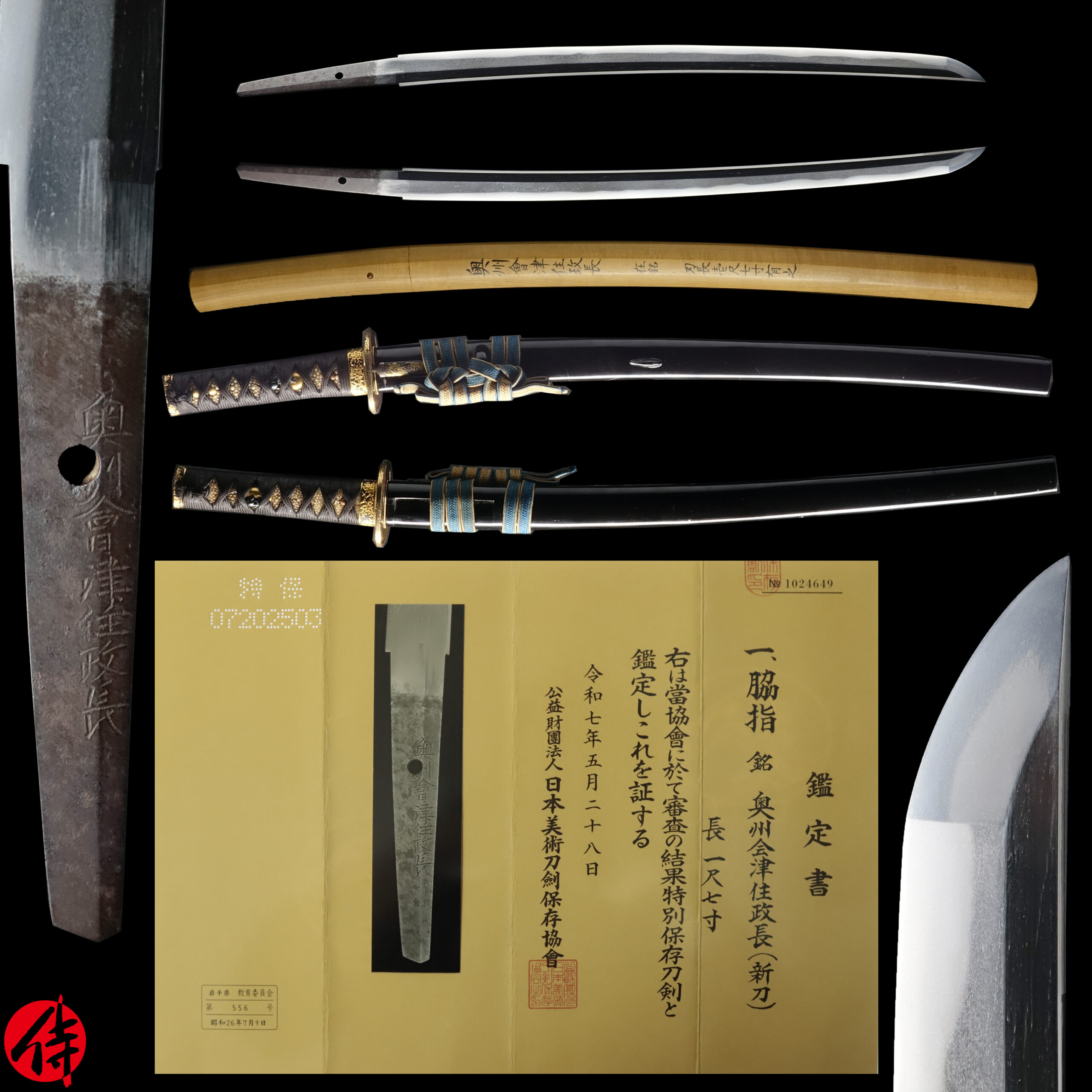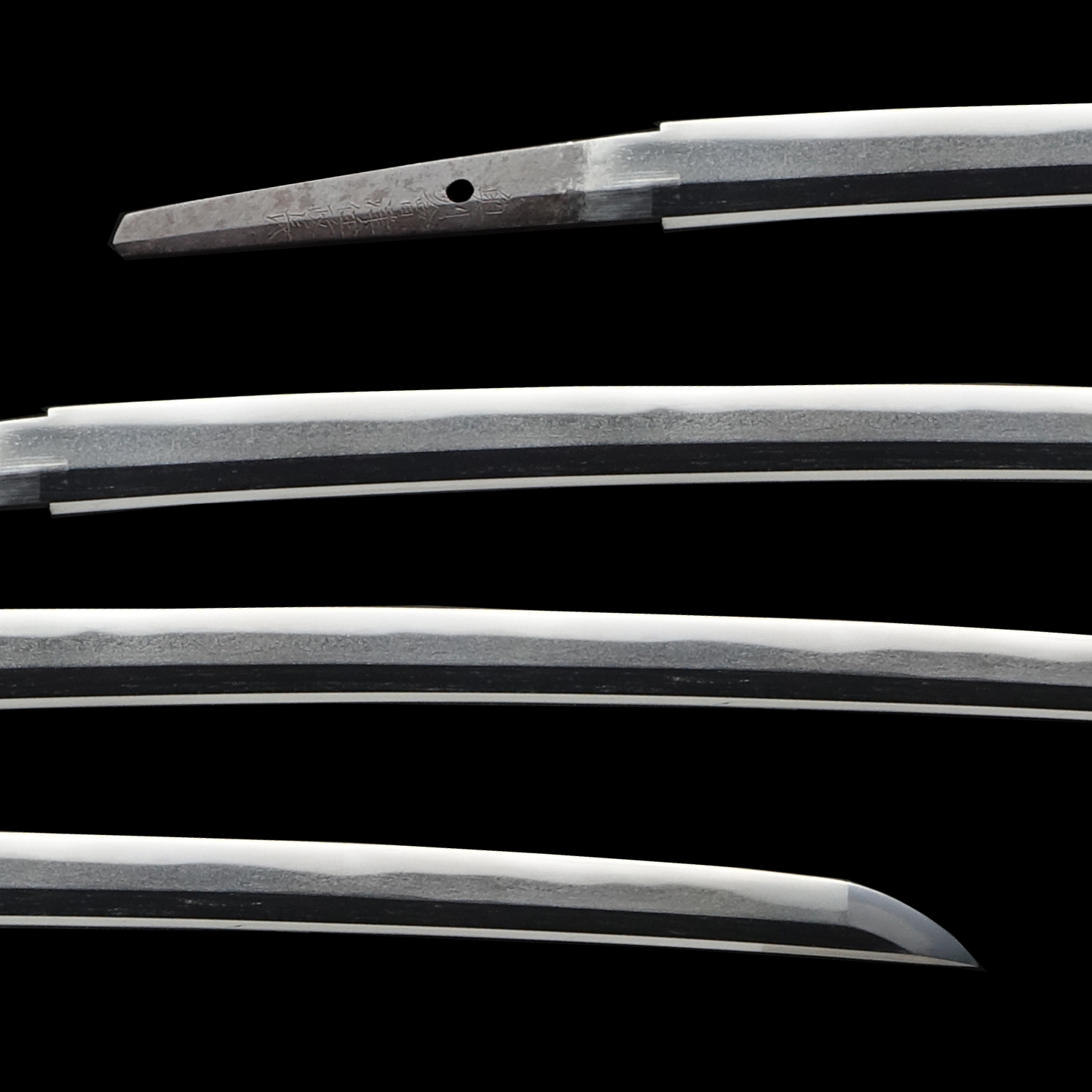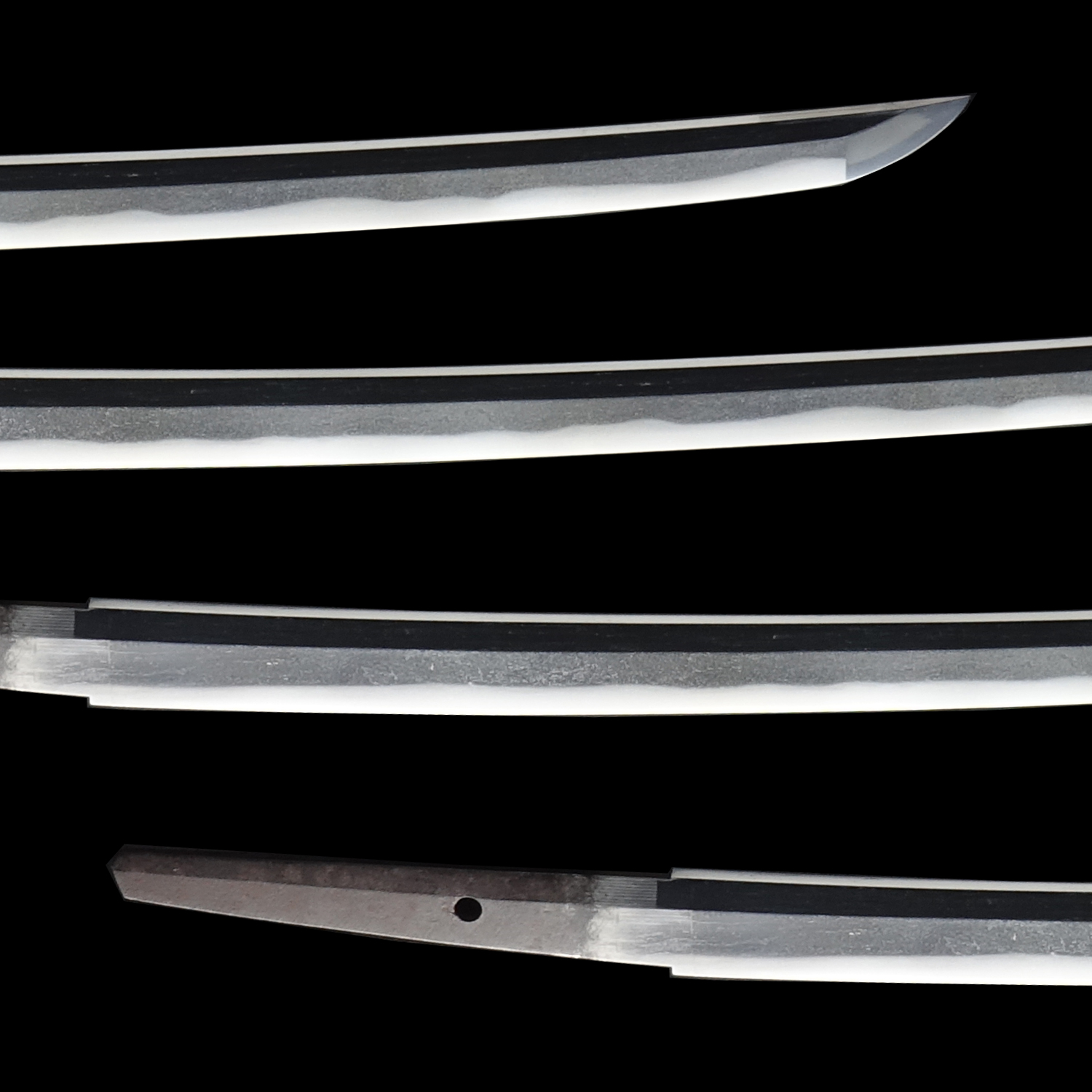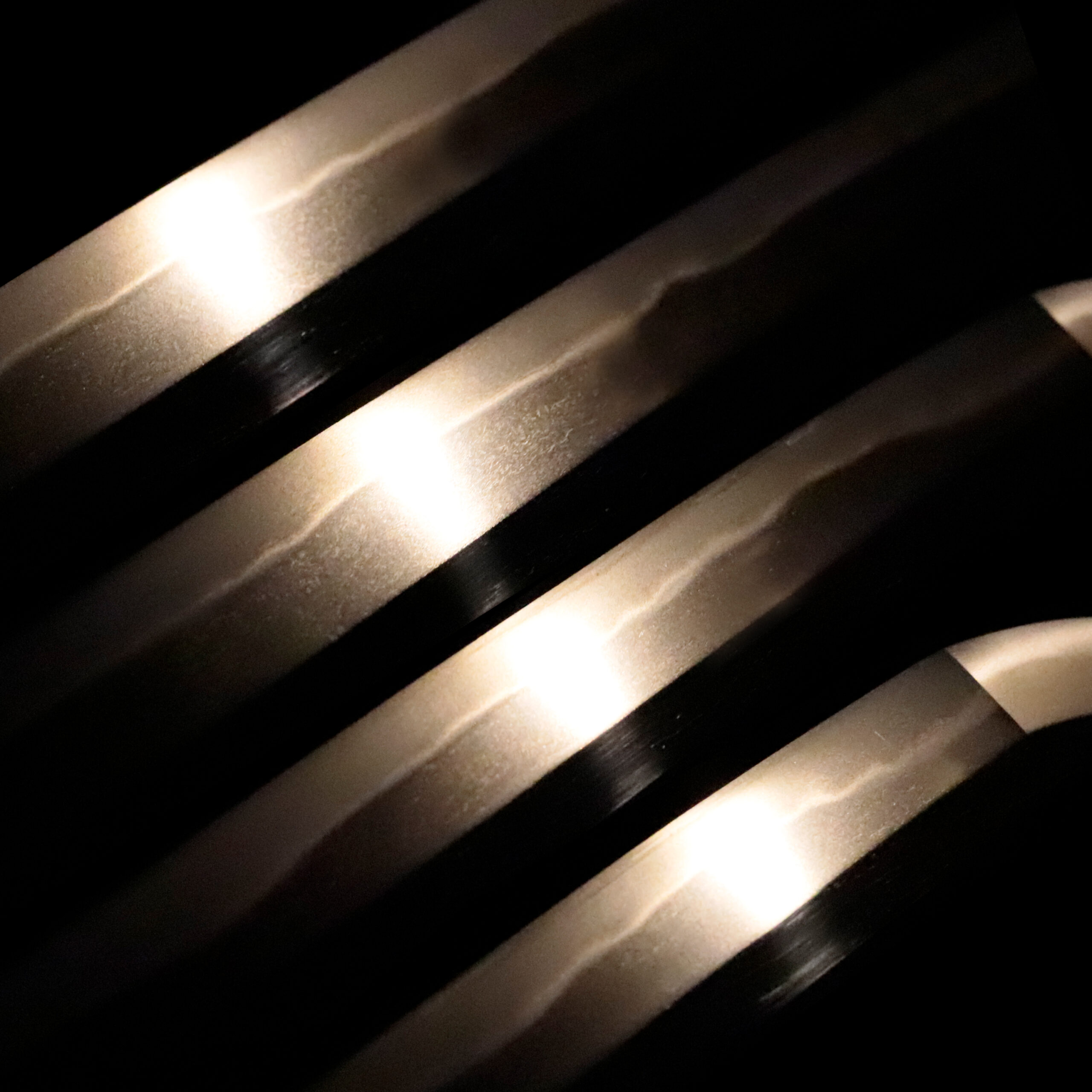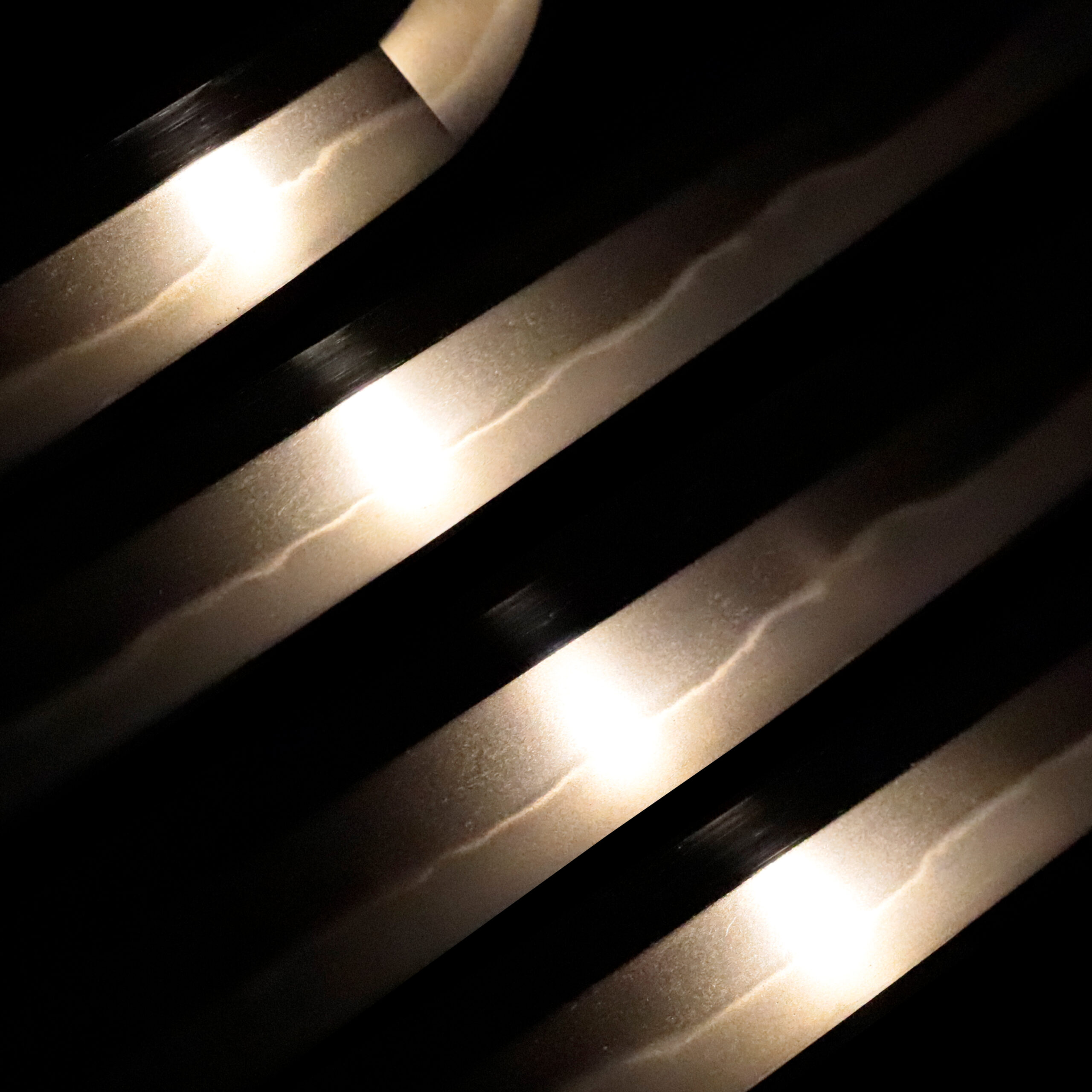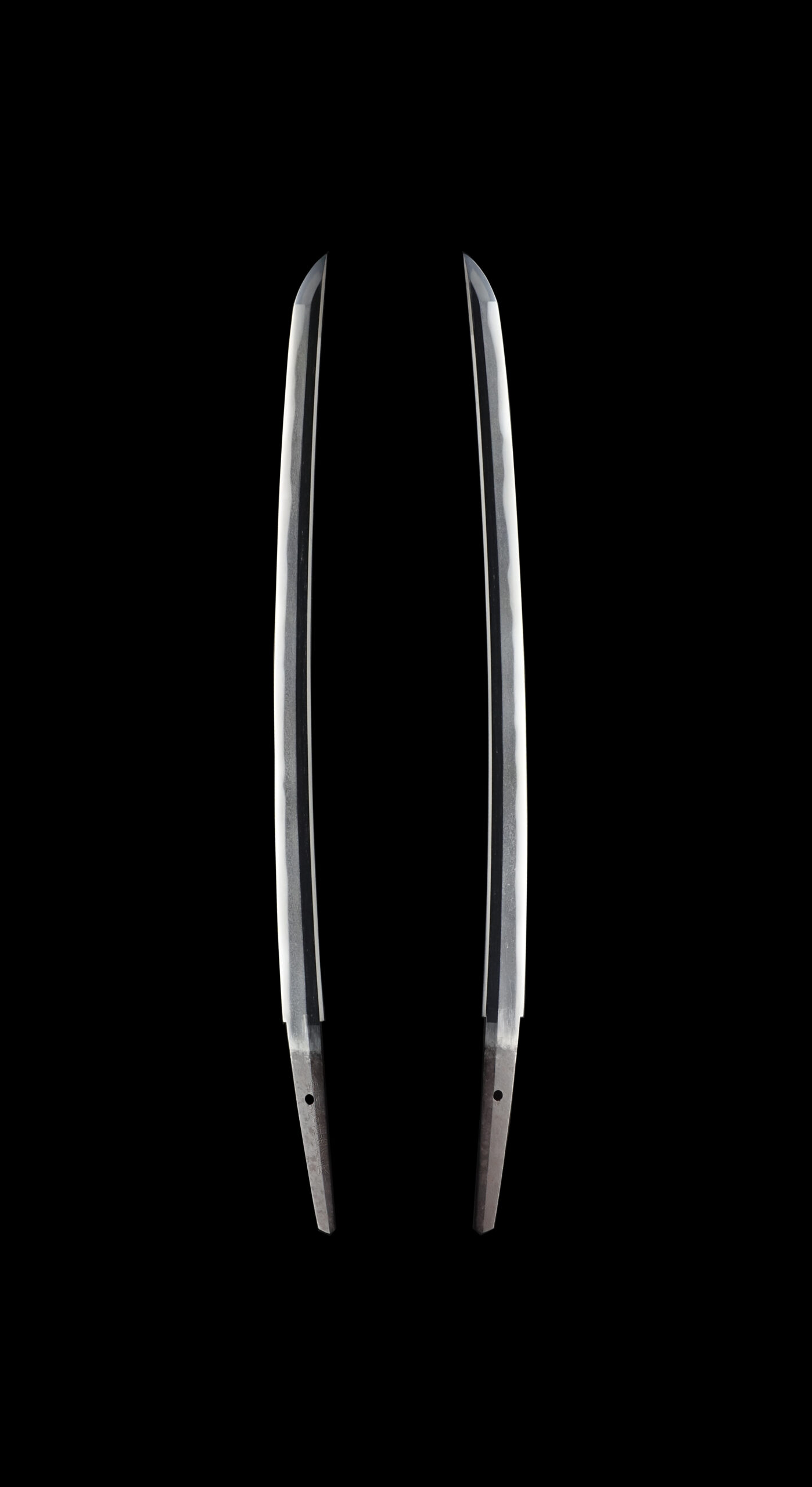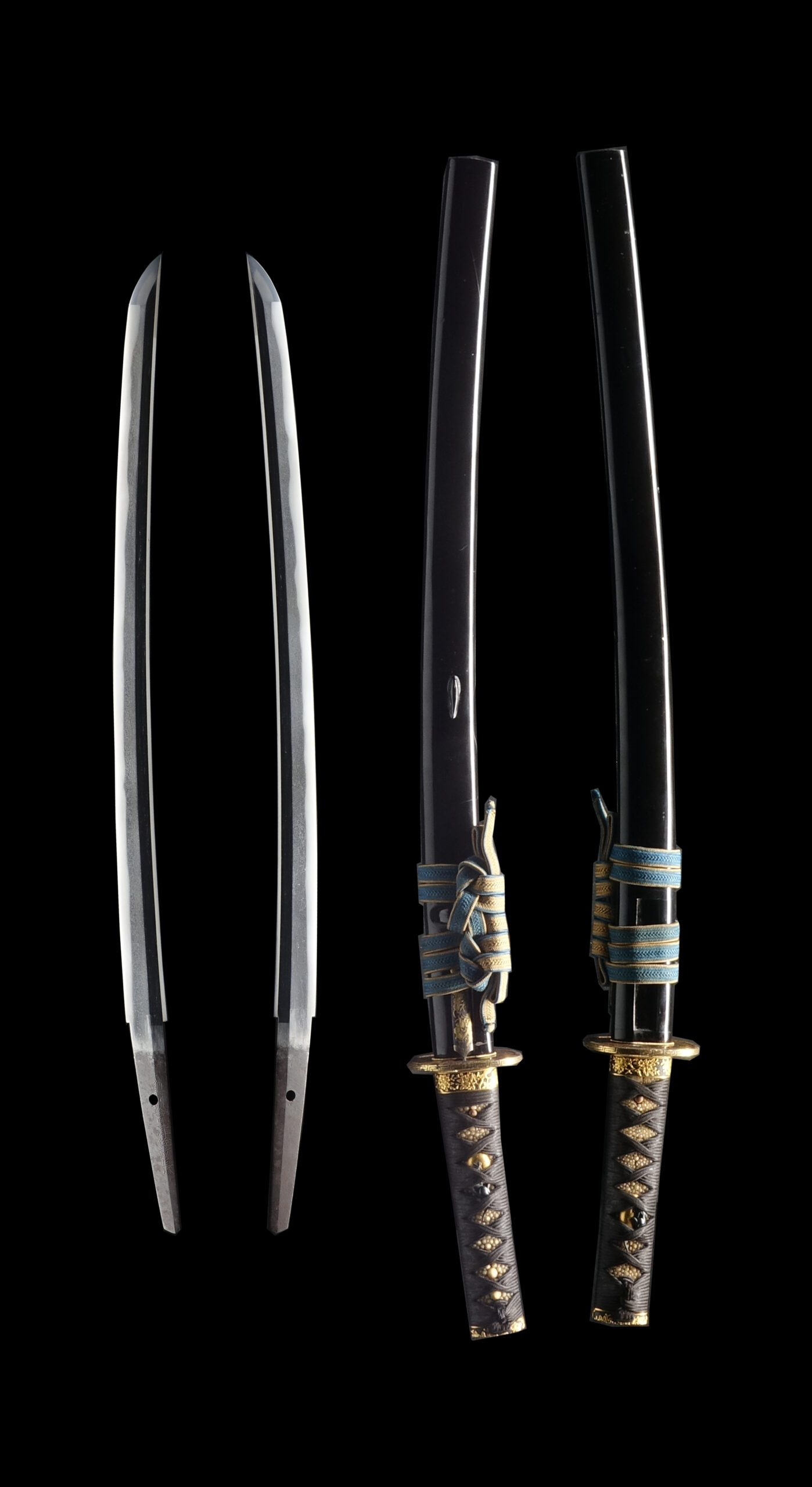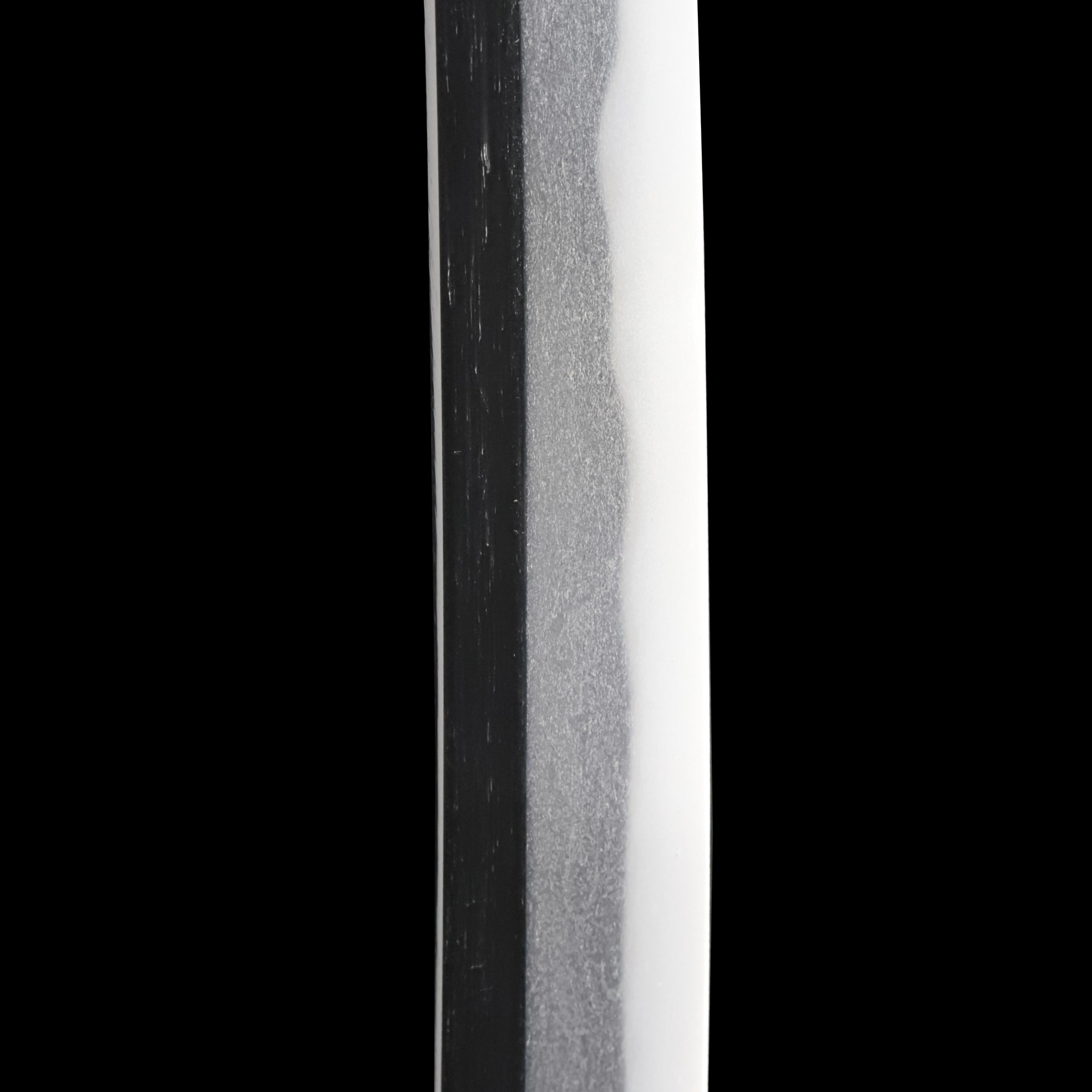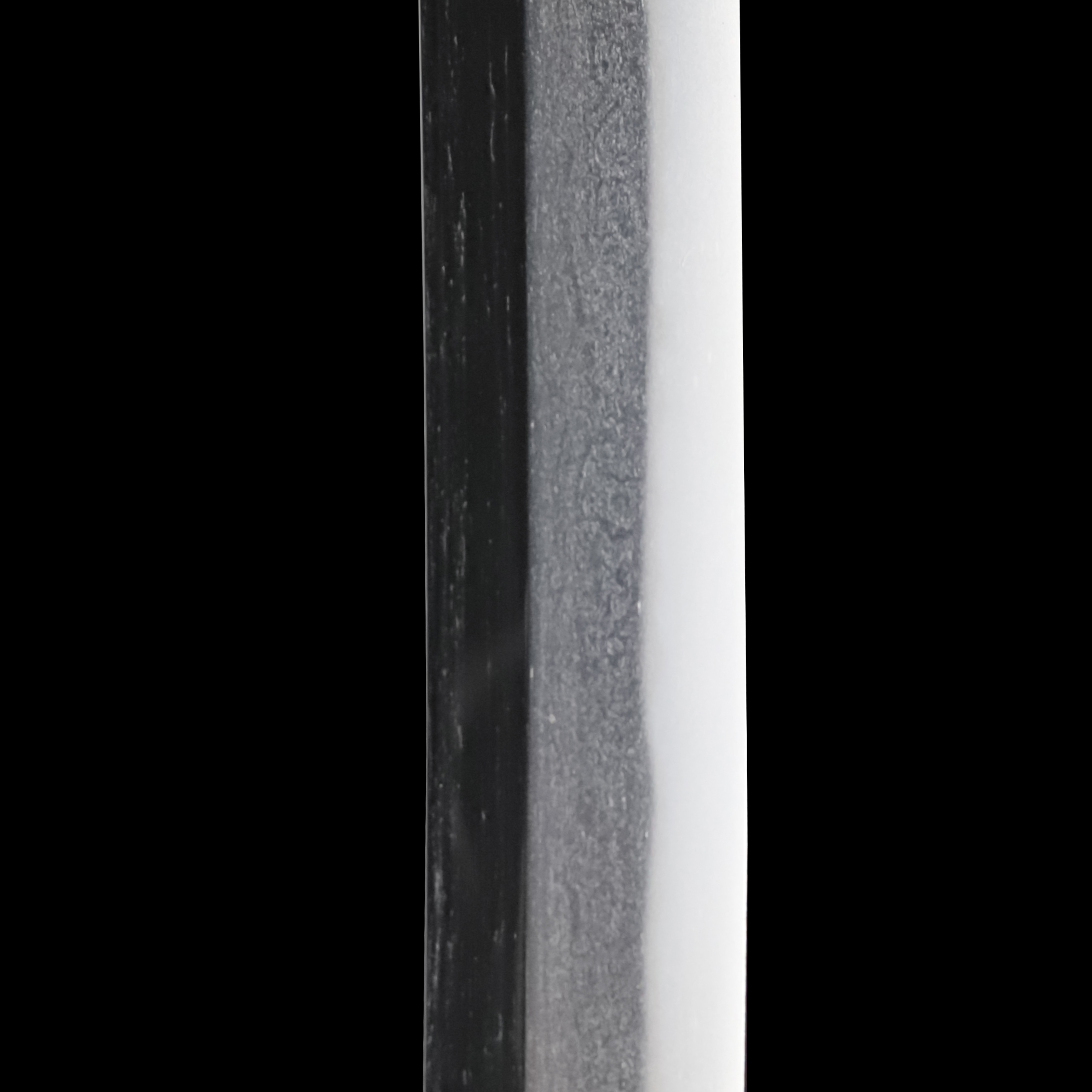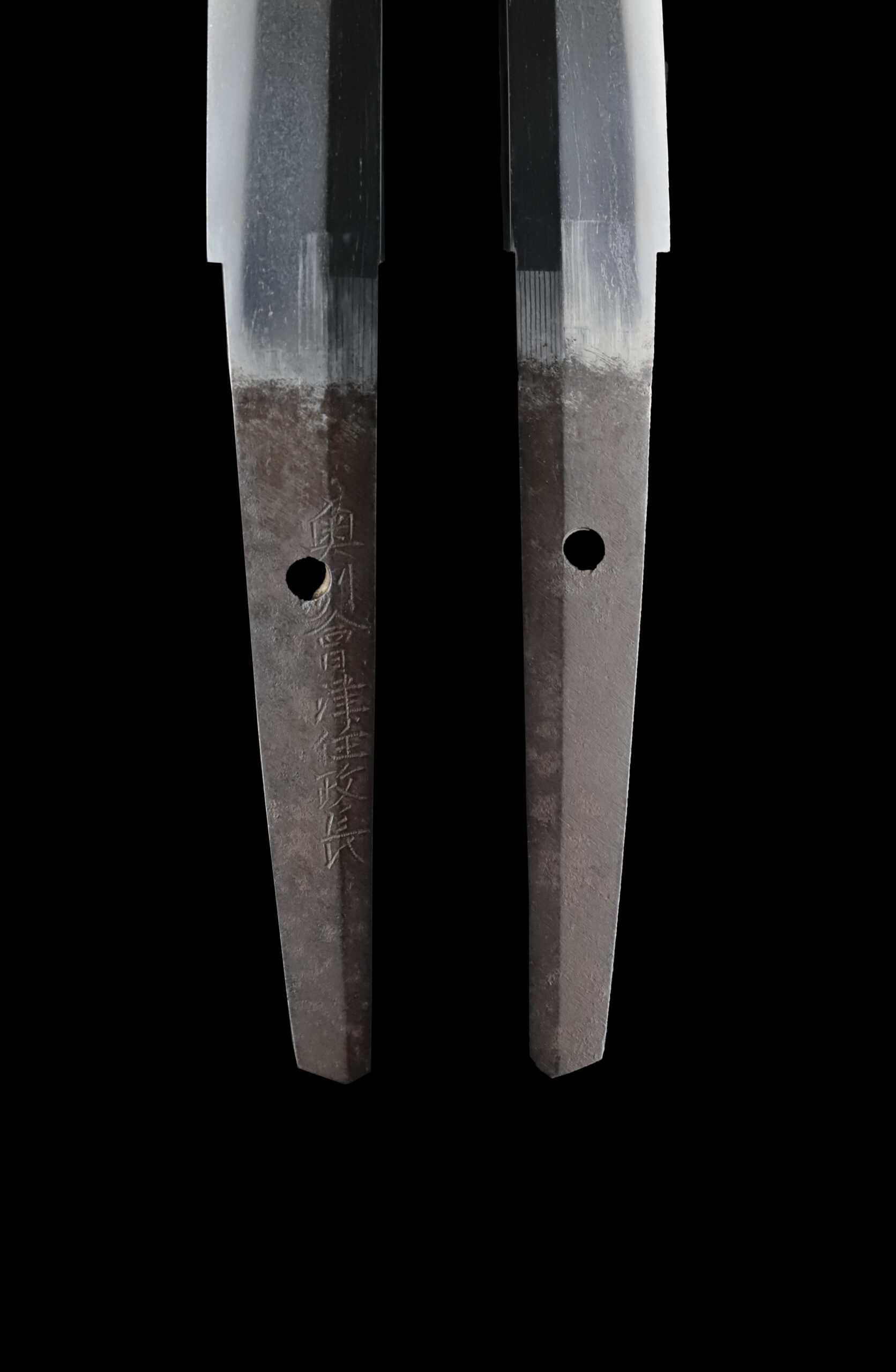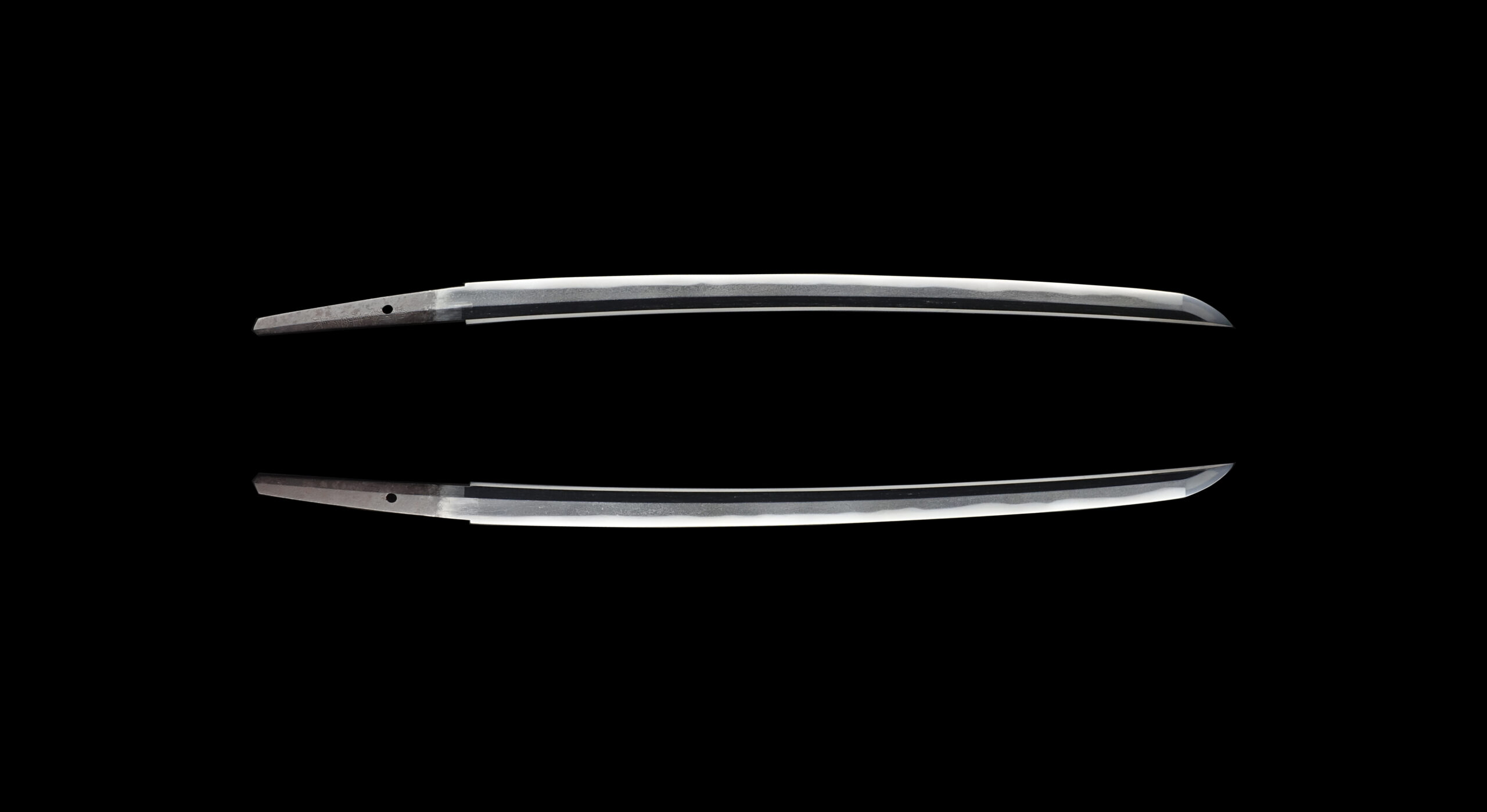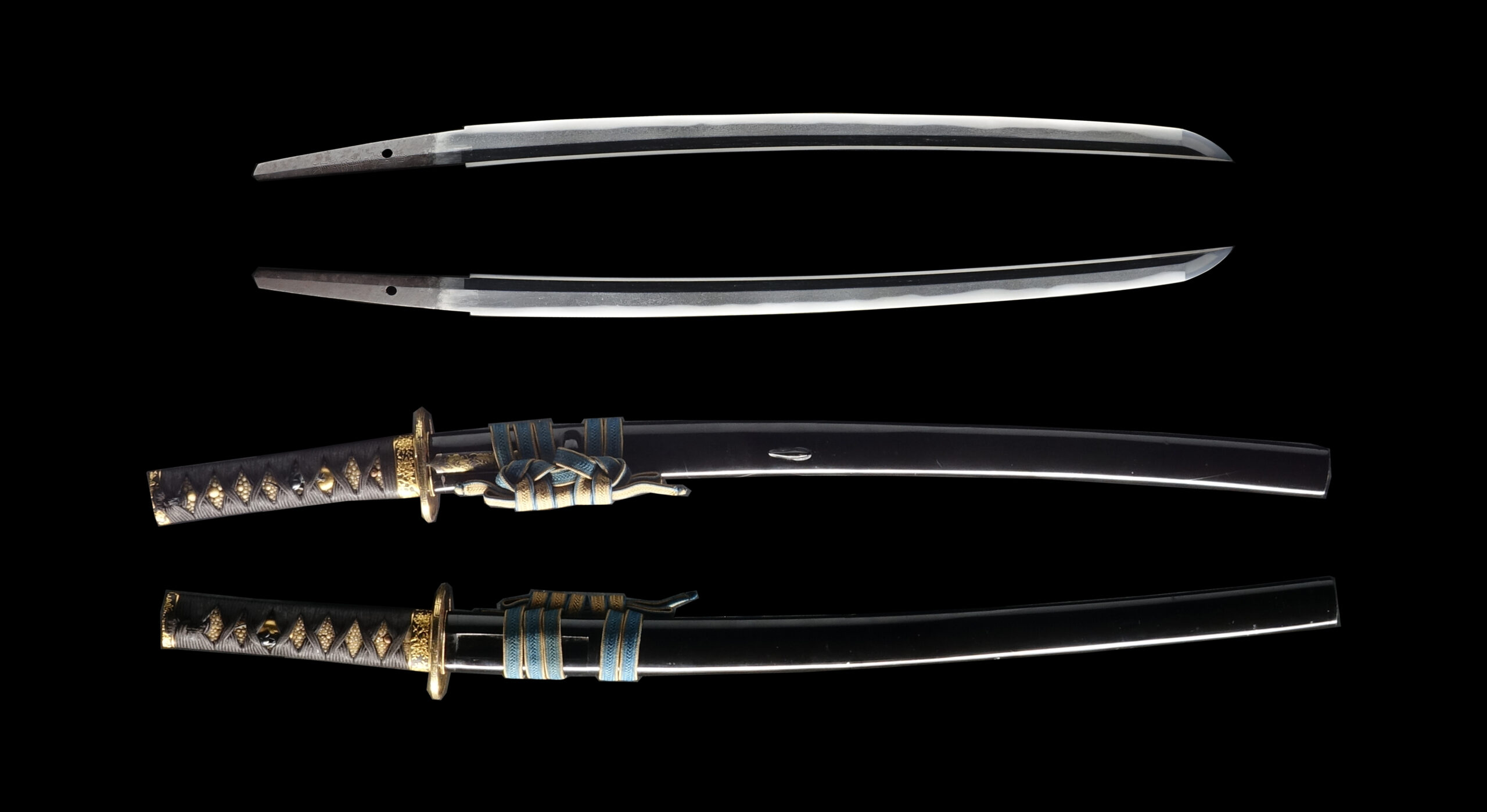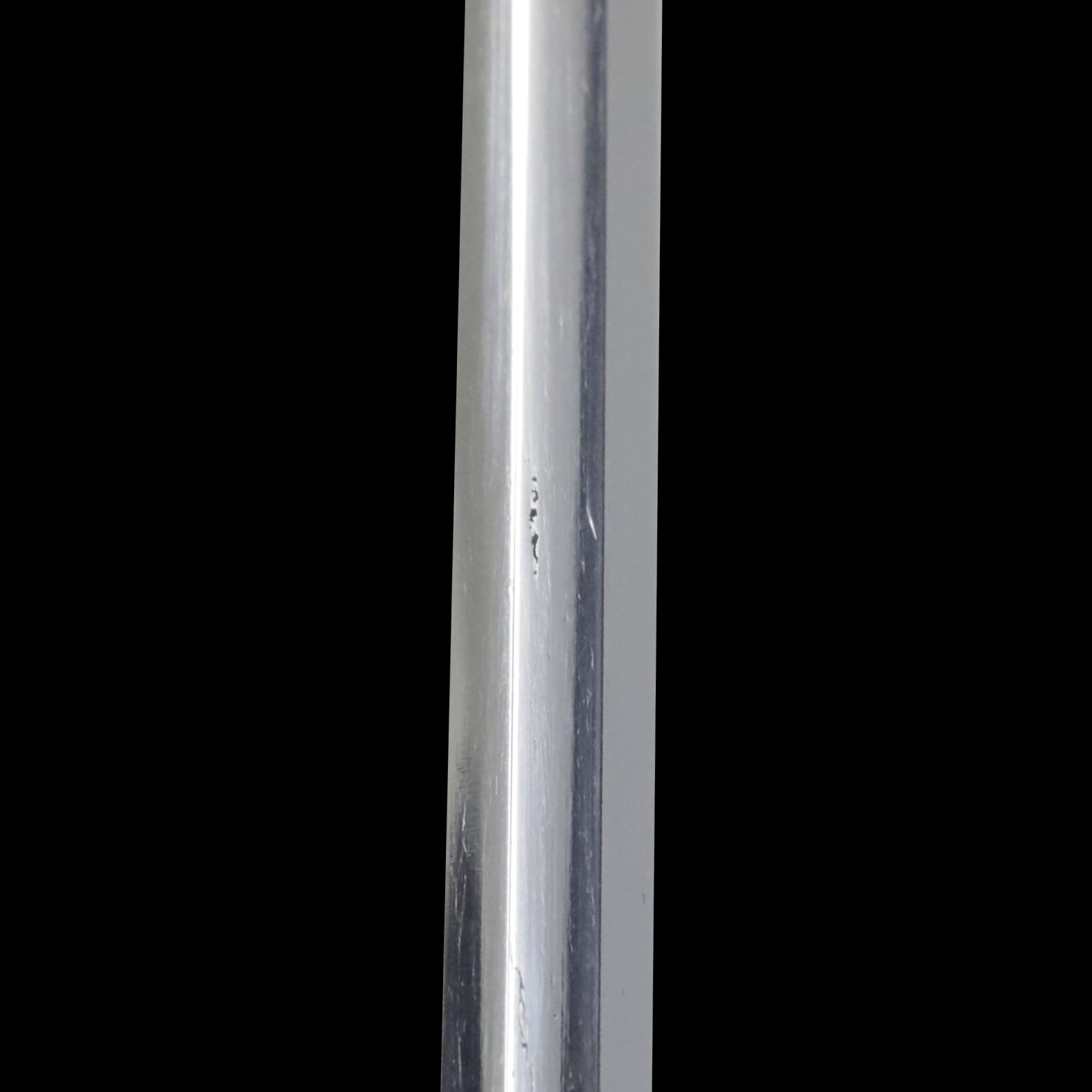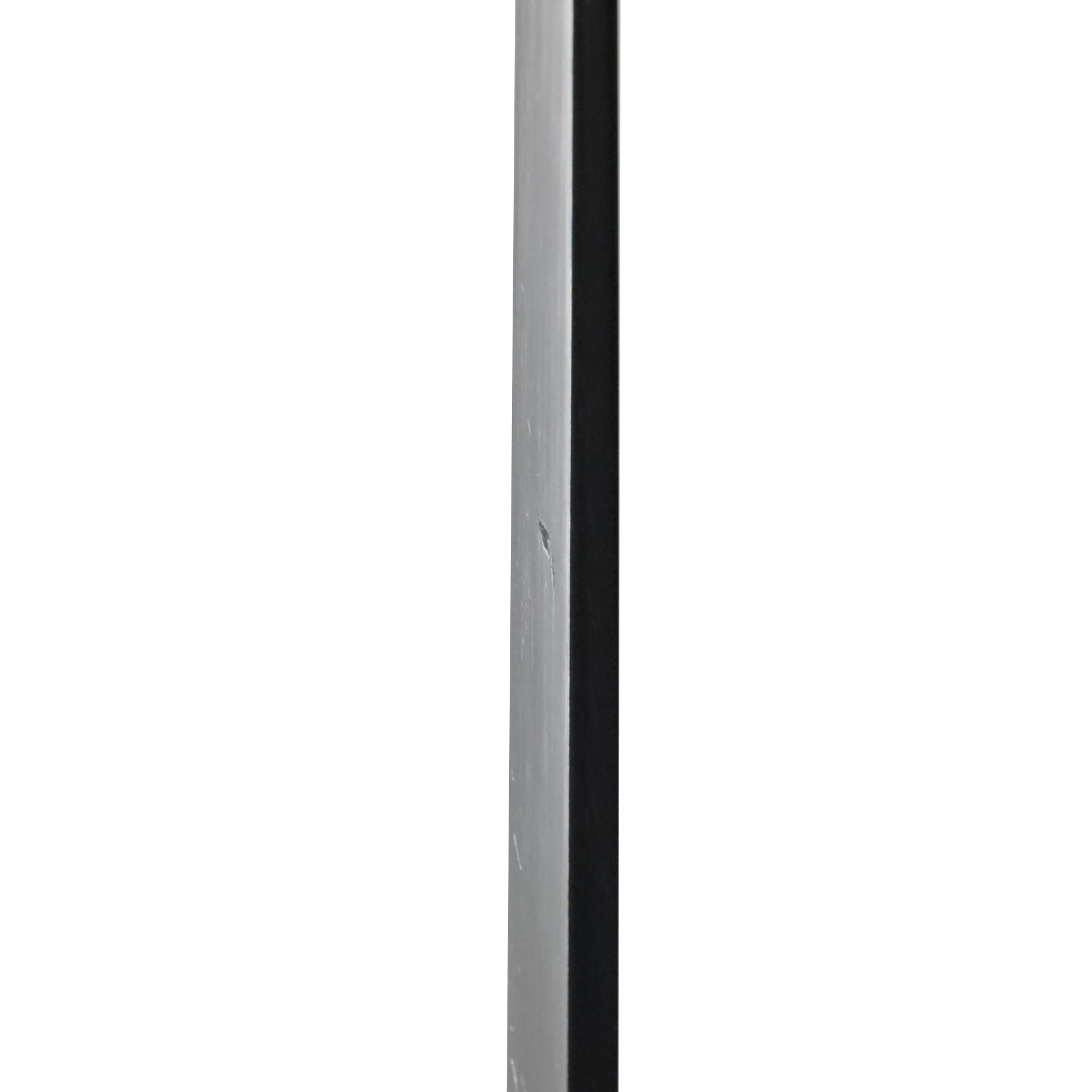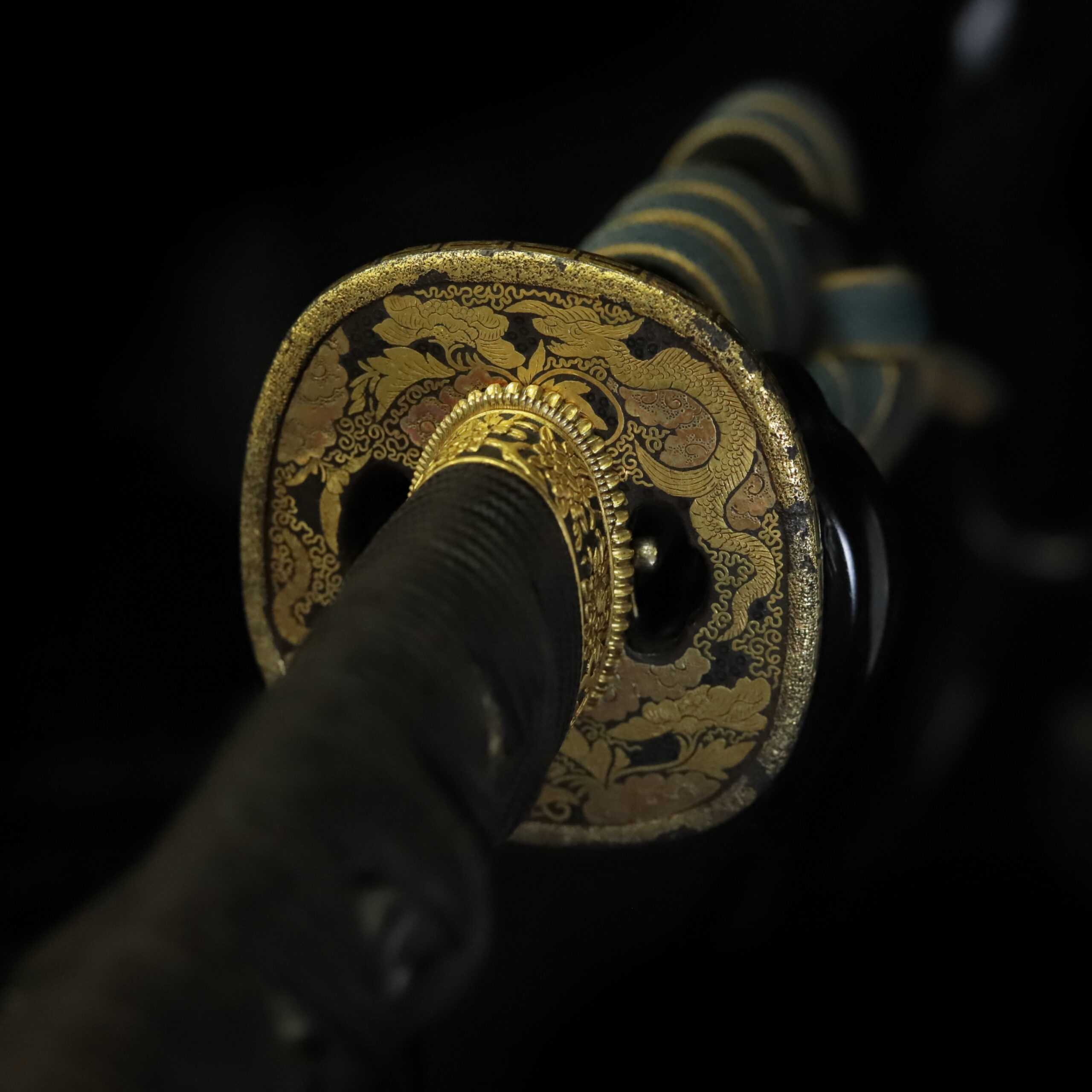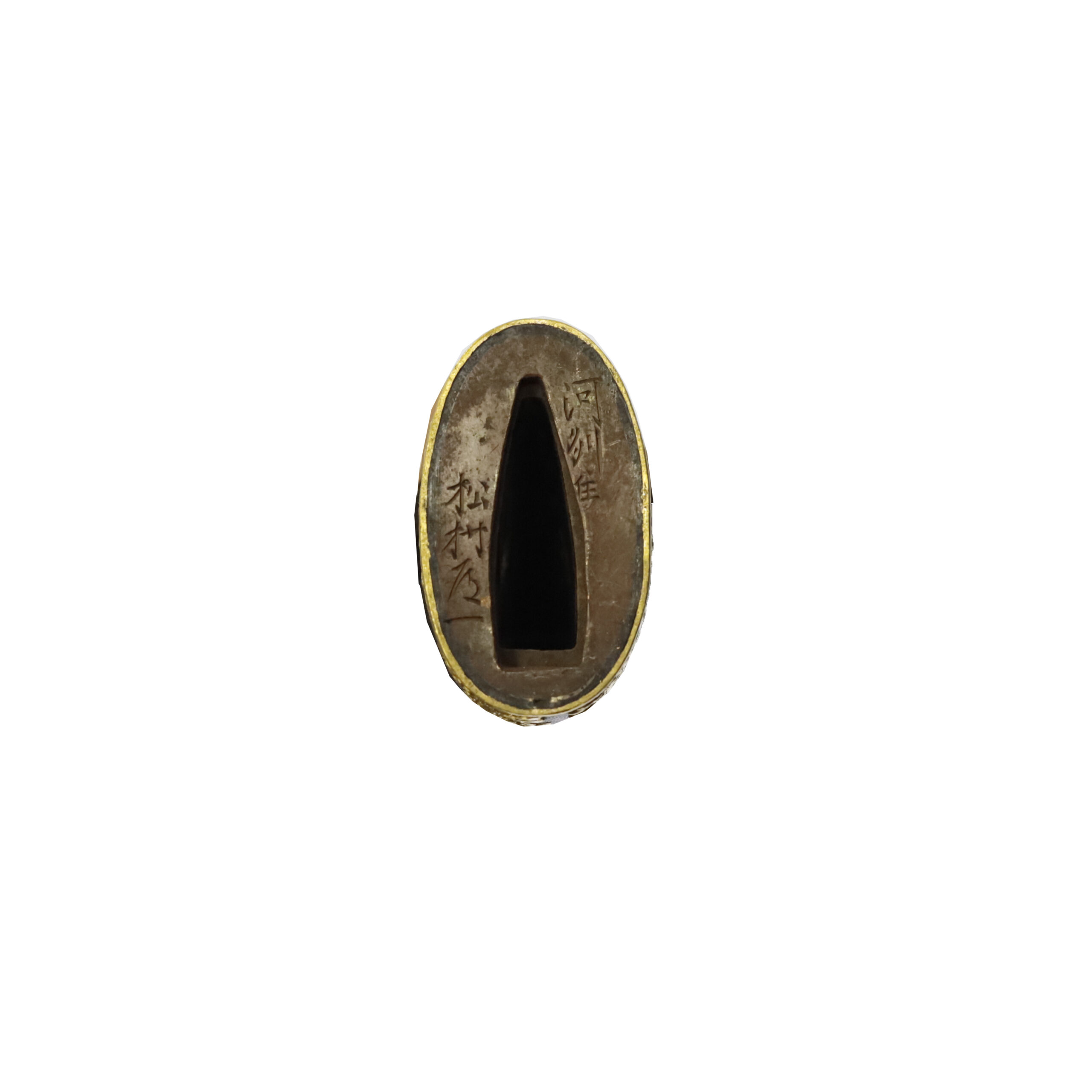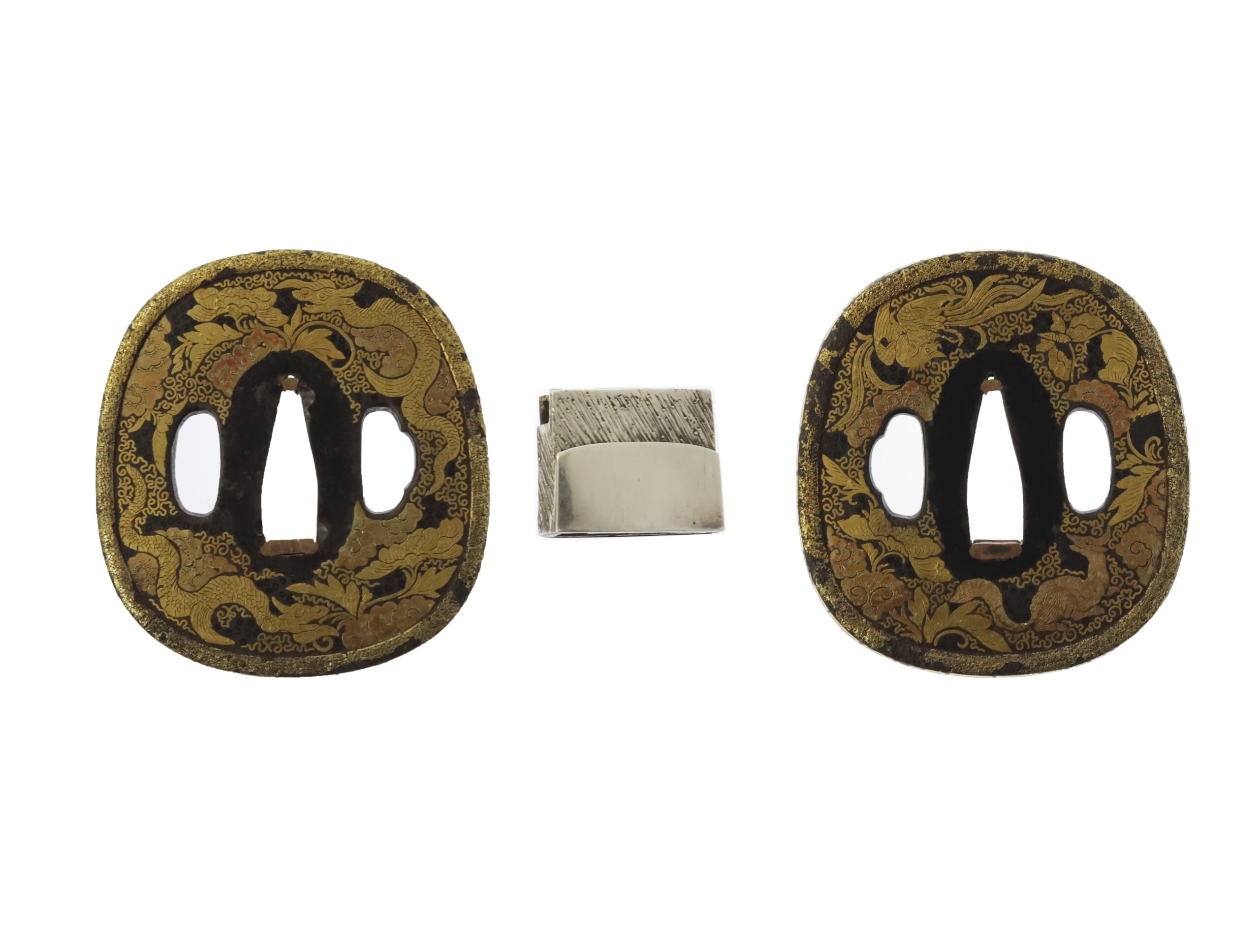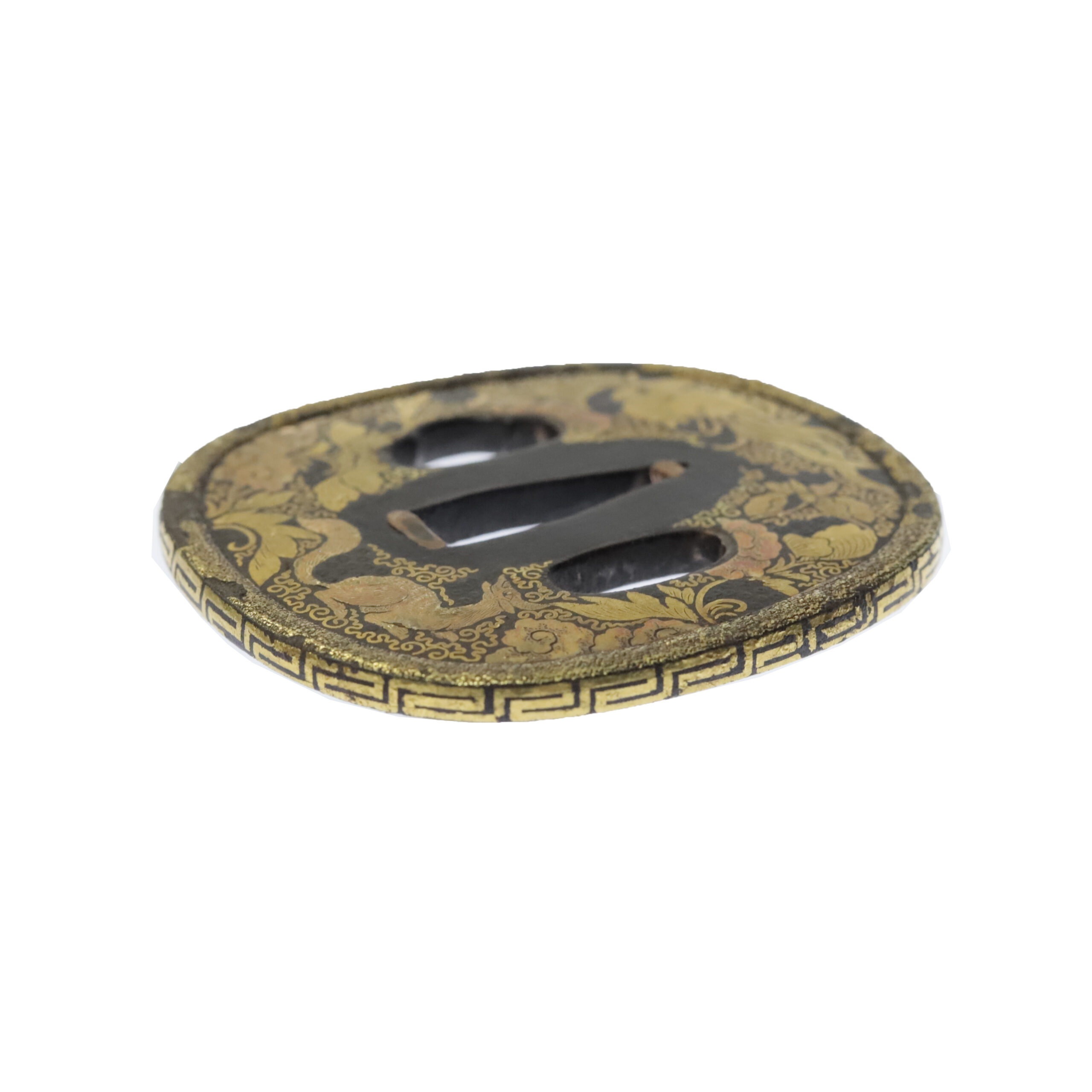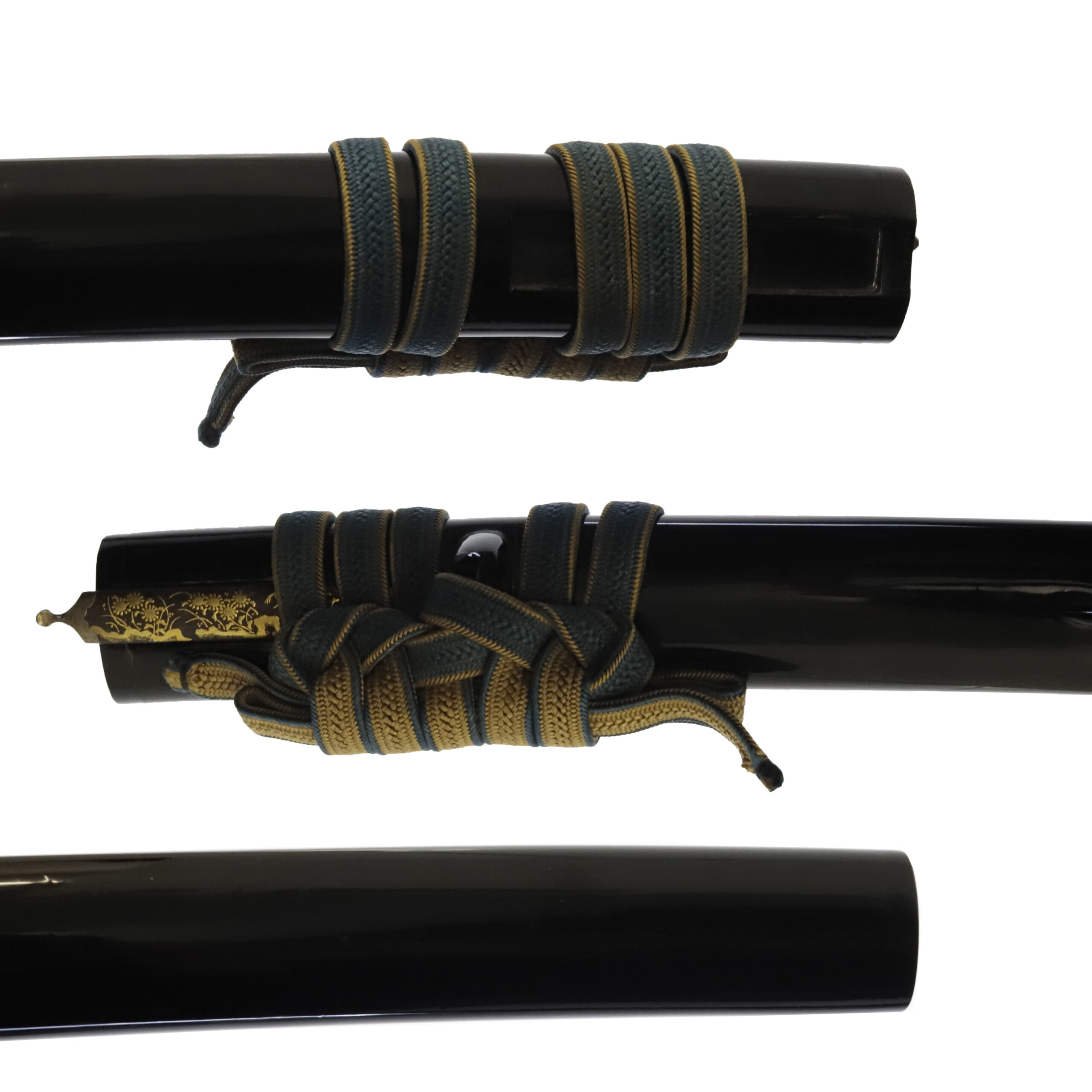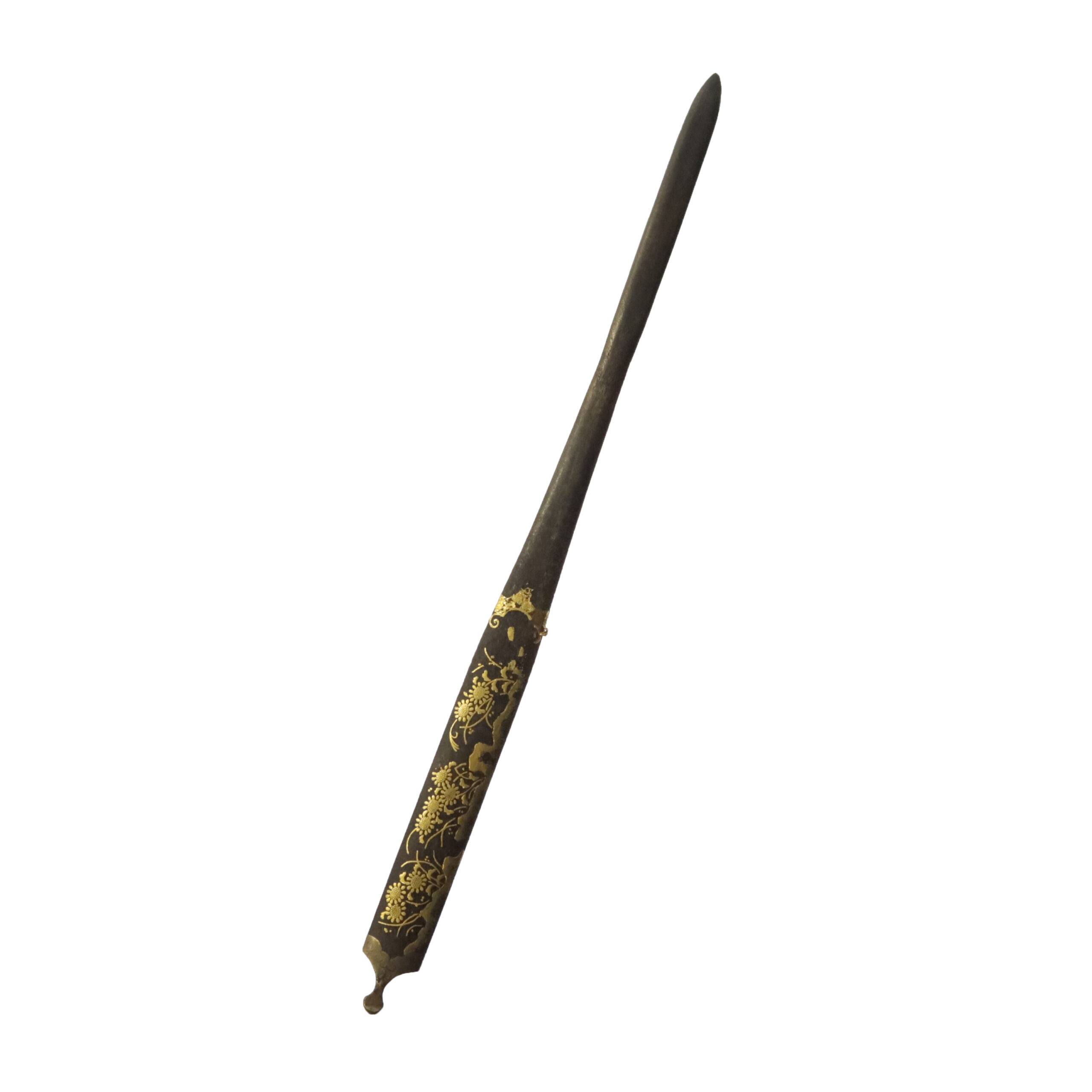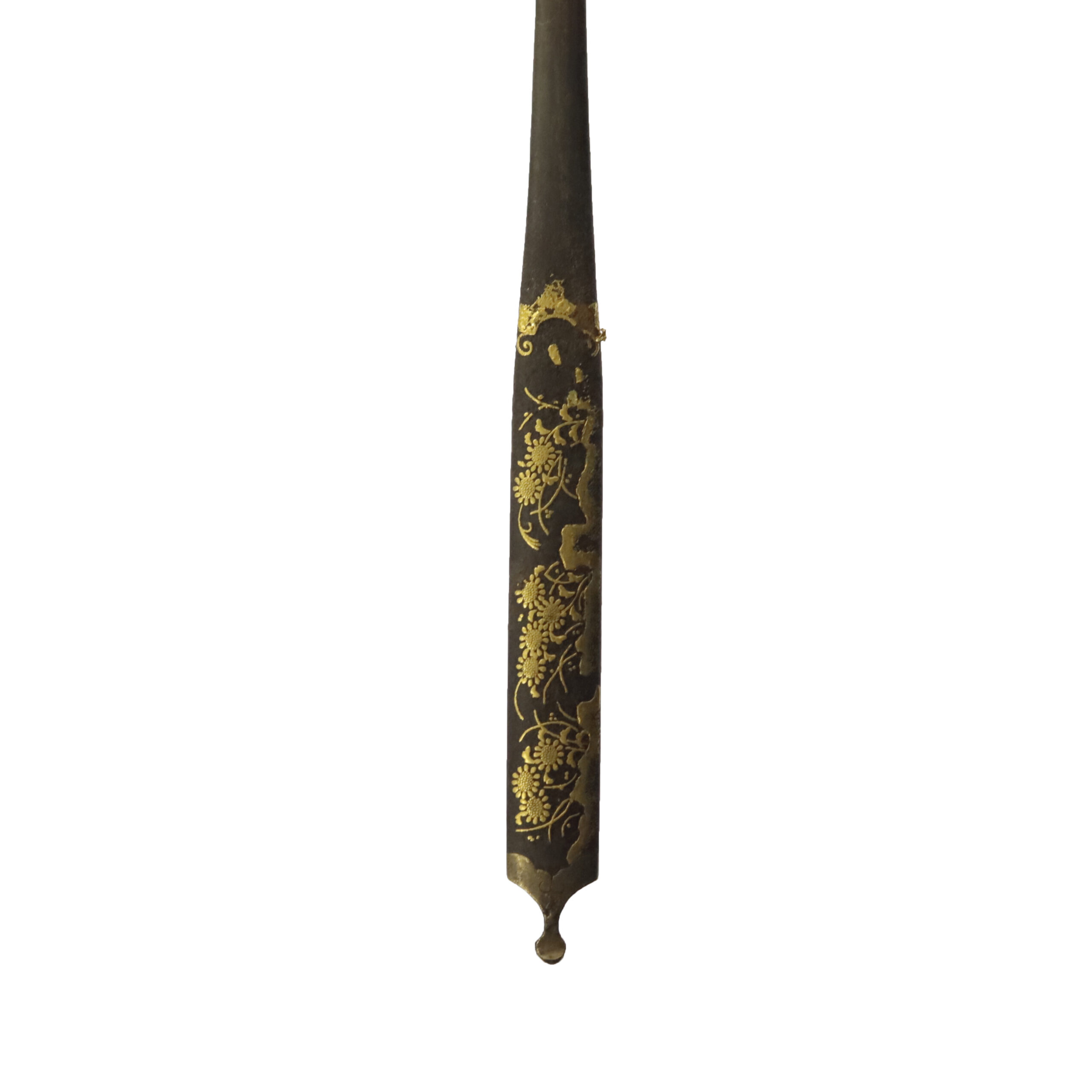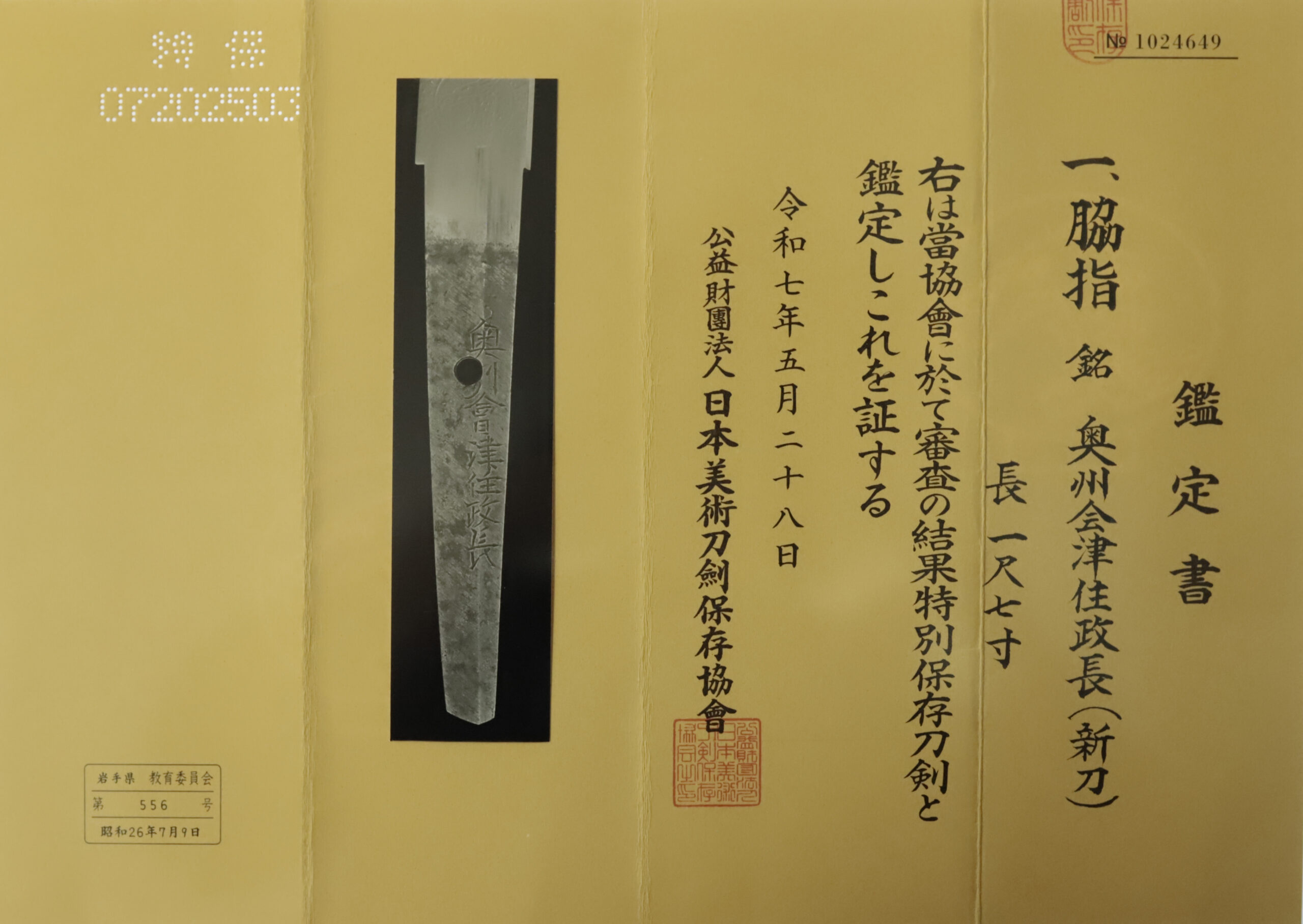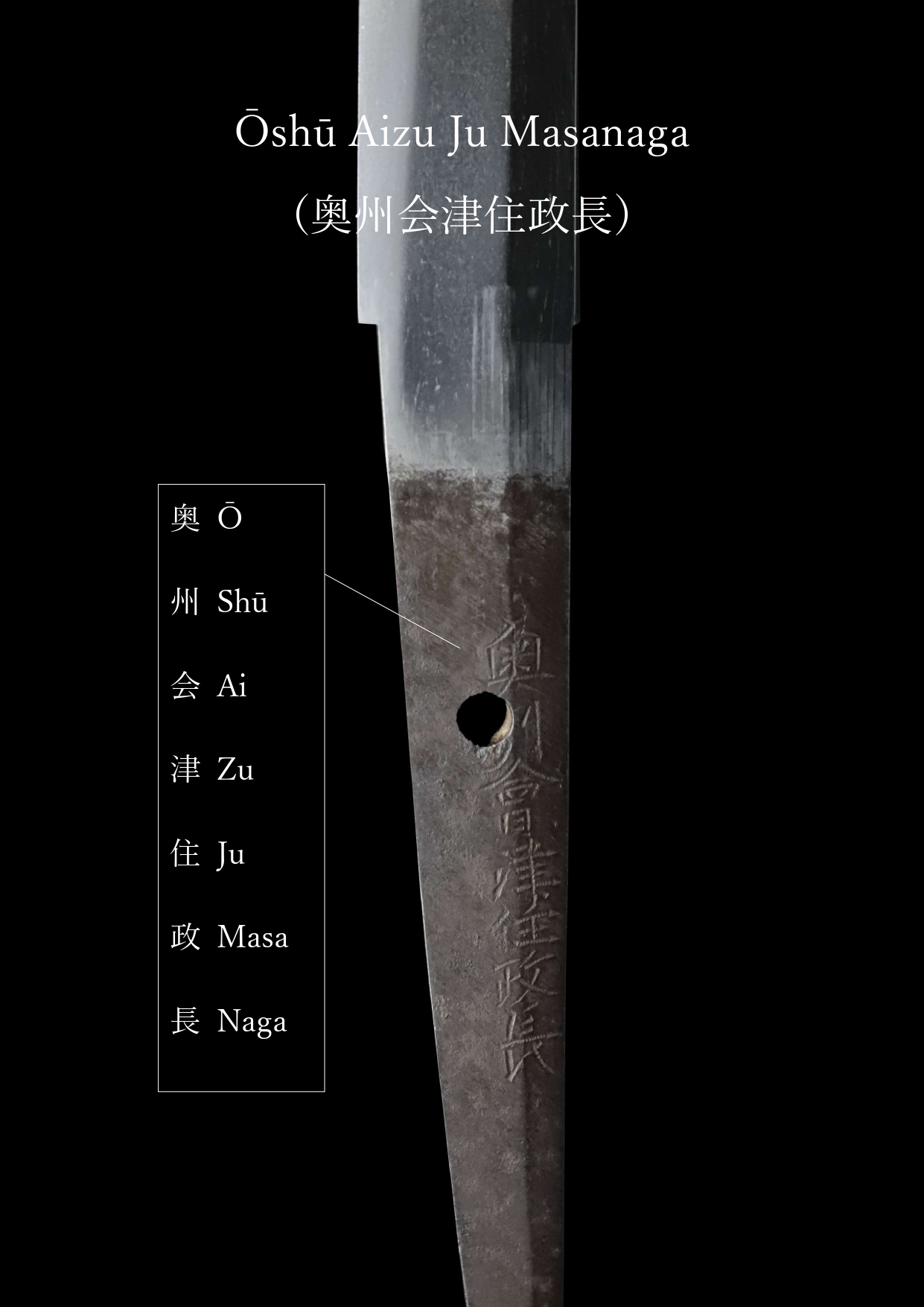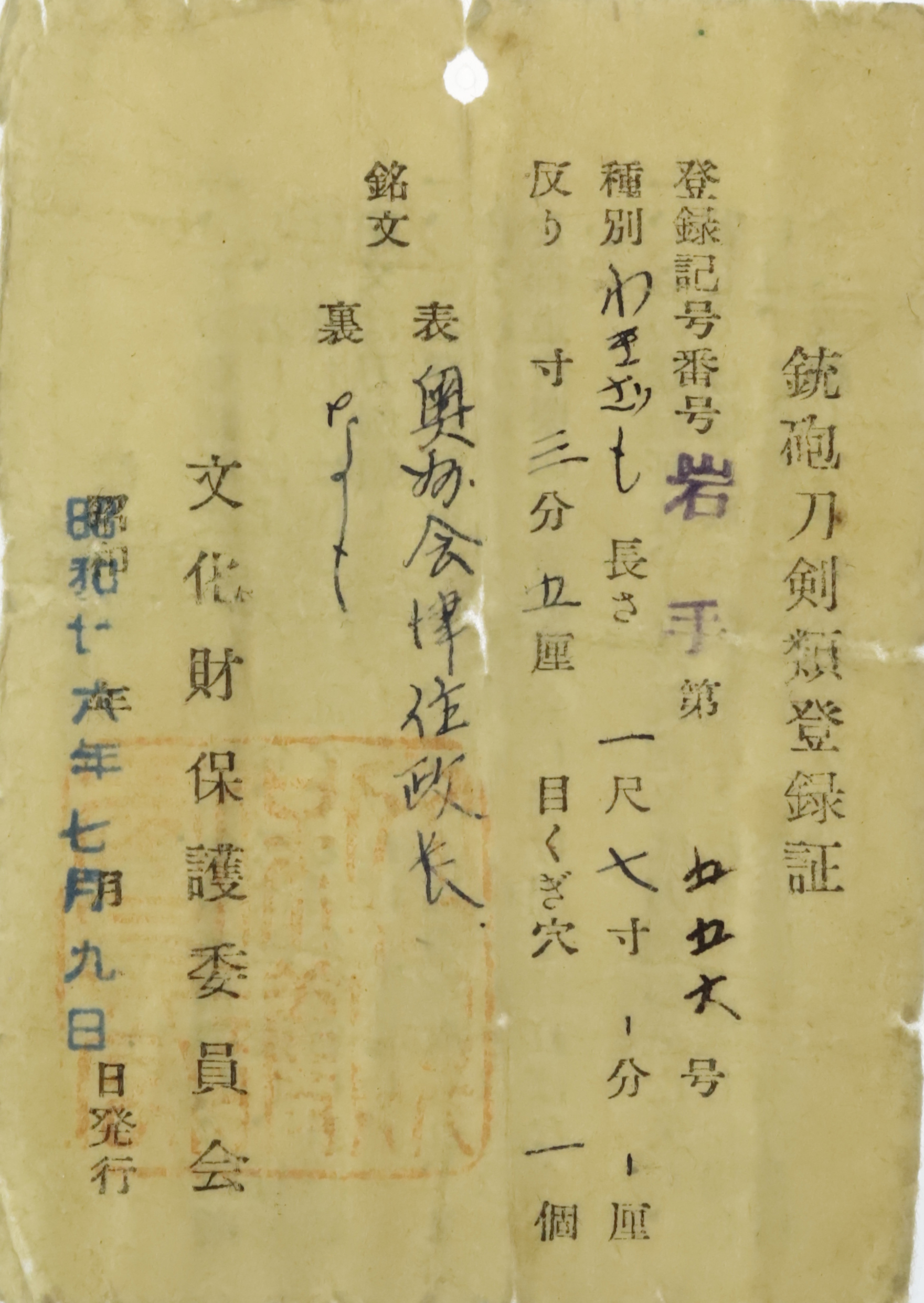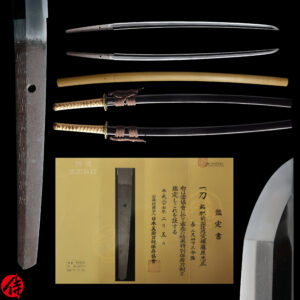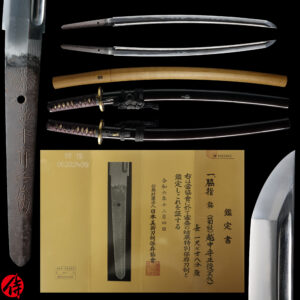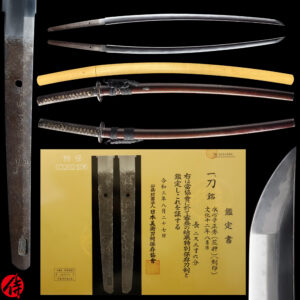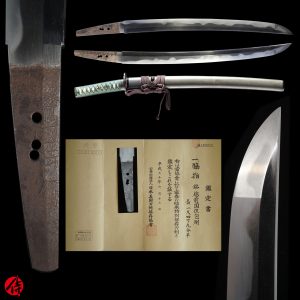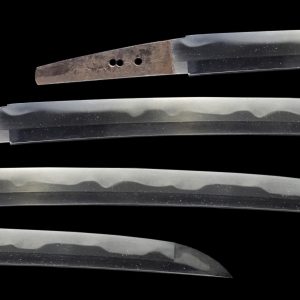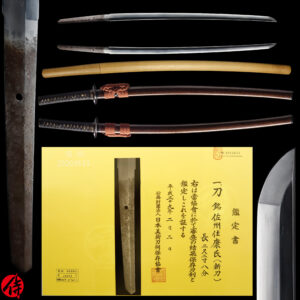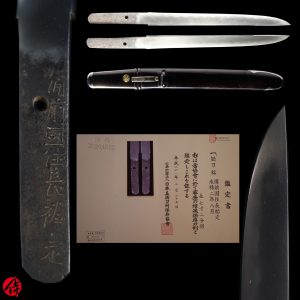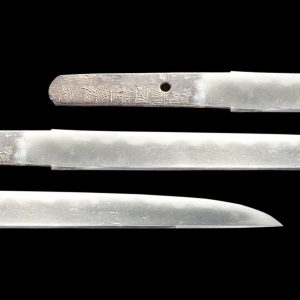Antique Japanese Sword Wakizashi Signed by the Masanaga with NBTHK Tokubetsu Hozon Certificate
【Description】
This blade was forged in the early Edo period by the swordsmith Masanaga (政長), who lived in Aizu, Ōshū Province (present-day Fukushima Prefecture).
Masanaga was the son of Miyoshi Nagakuni (三好長国) and the father of Miyoshi Nagamichi (三好長道). He was originally born in Matsuyama, Iyo Province (today’s Ehime Prefecture). Later, he moved to Kyoto and became a disciple of the famous master Umetada Myōjū (埋忠明寿), from whom he learned the art of horimono (engraving).
In Kanei 4 (1627), when their lord Kato Masayuki (加藤正之) was transferred to Aizu, Masanao moved there together with his father, Nagakuni. From that time onward, the Miyoshi lineage—beginning with Nagakuni, Masanaga, and later Nagamichi—became established as one of the two great swordsmith families of Aizu, alongside the Kanesada (兼定) school that had moved there from Mino Province.
The works of the Miyoshi school are well known for their excellent cutting ability (wazamono). Masanaga’s son, Miyoshi Nagamichi, became especially famous and was called the “Aizu Kotetsu (会津虎徹)” for the sharpness and superior quality of his blades.
Due to his training under Umetada Myōjū, Masanaga’s works strongly reflect the Yamashiro-den style, with elegant craftsmanship and refined horimono. The tradition he founded in Aizu continued for generations, producing many master swordsmiths of great renown.
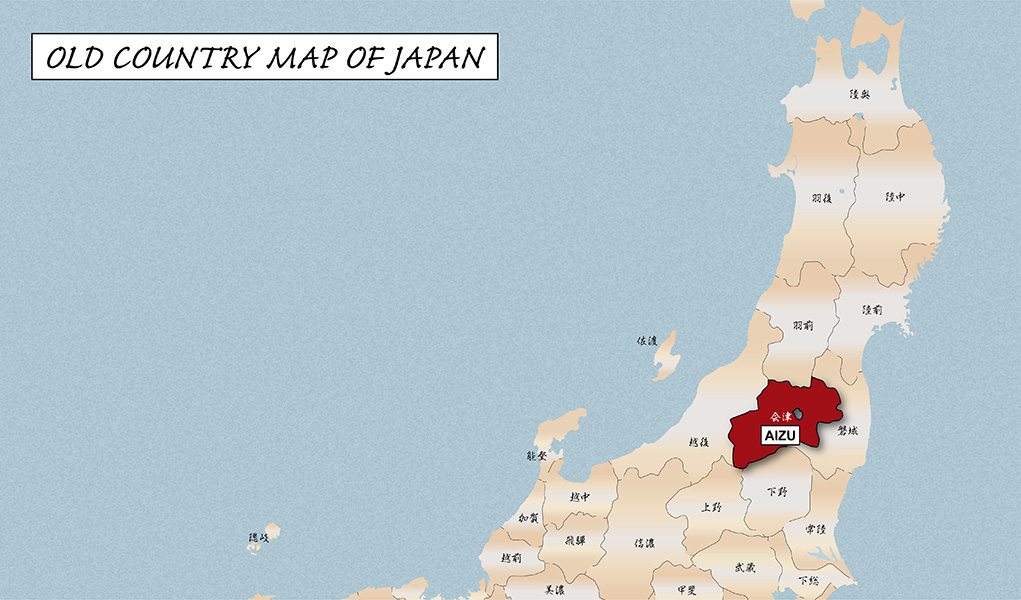
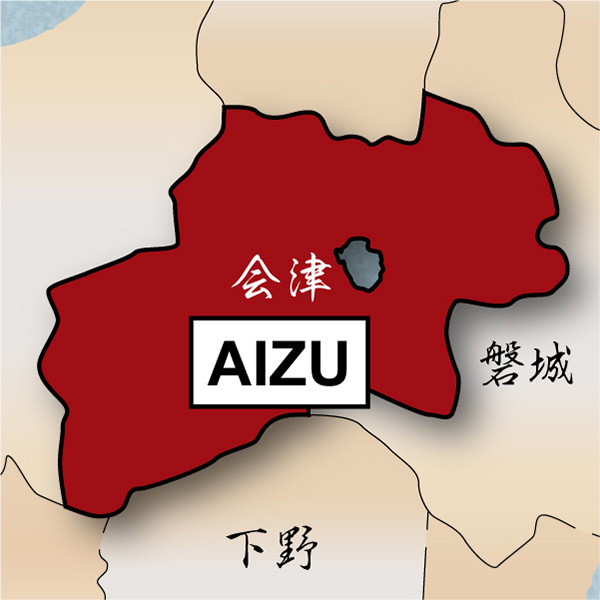
It is appraised as a Tokubetsu Hozon Token (特別保存刀剣) issued by NBTHK (Nihon Bijutsu Touken Hozon Kyokai: 日本美術刀剣保存協会). This authentication paper was only given to authentic Japanese swords, especially well preserved and high quality with artistic value.
*Please keep in mind that there is a couple of Kitae Kizu on the Mune (backbone of the blade). If you like to know the detailed condition, please feel free to contact us.
【Blade】
Cutting Edge Length (Nagasa):51.5 cm (20.2 inches)
Curvature (Sori): 1.06 cm (0.41 inches)


Hamon:
The crystalline structure which forms along the cutting edge of a blade as a result of the hardening process.
Jimon(Jihada):
visible steel surface pattern created by folding and hammering during forging process
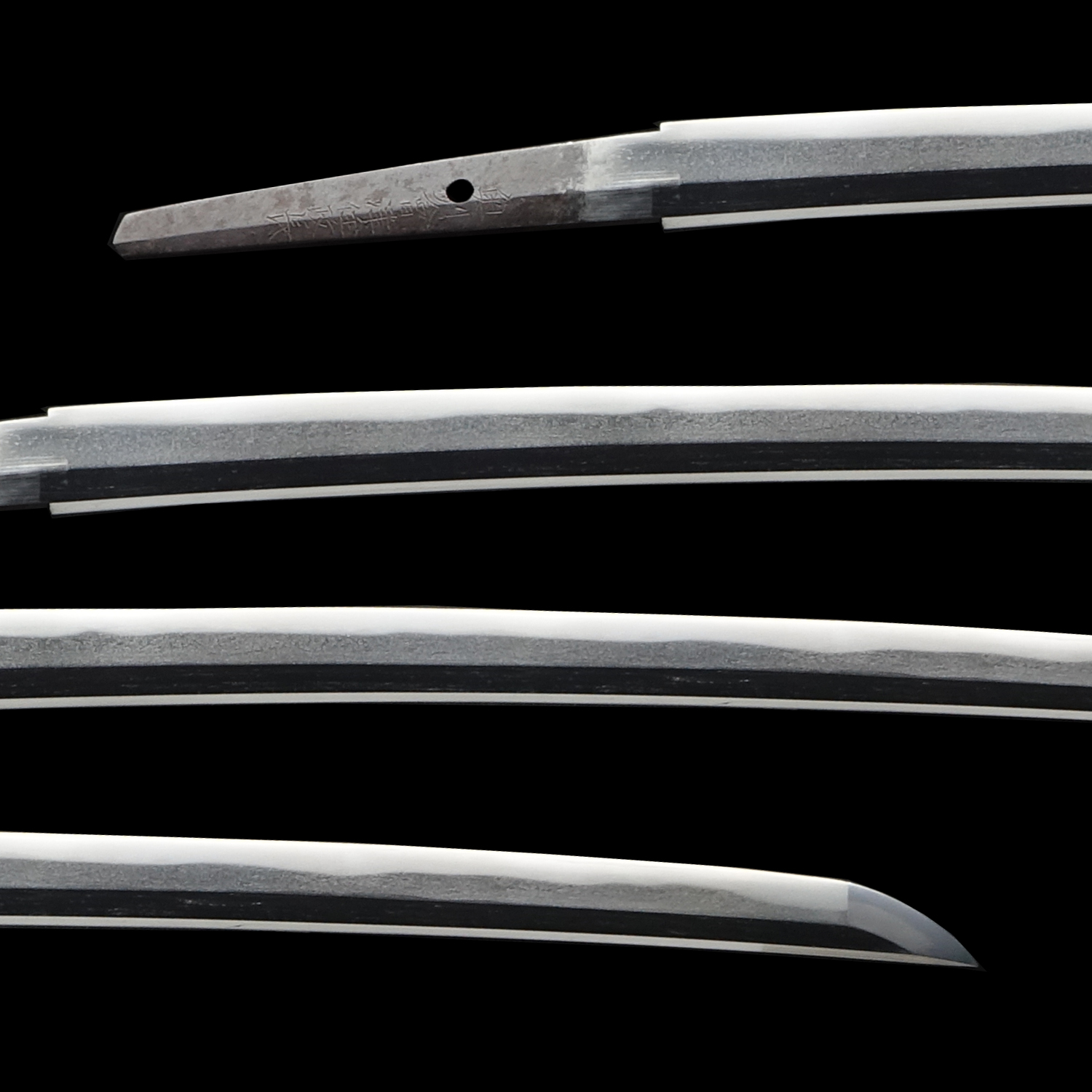
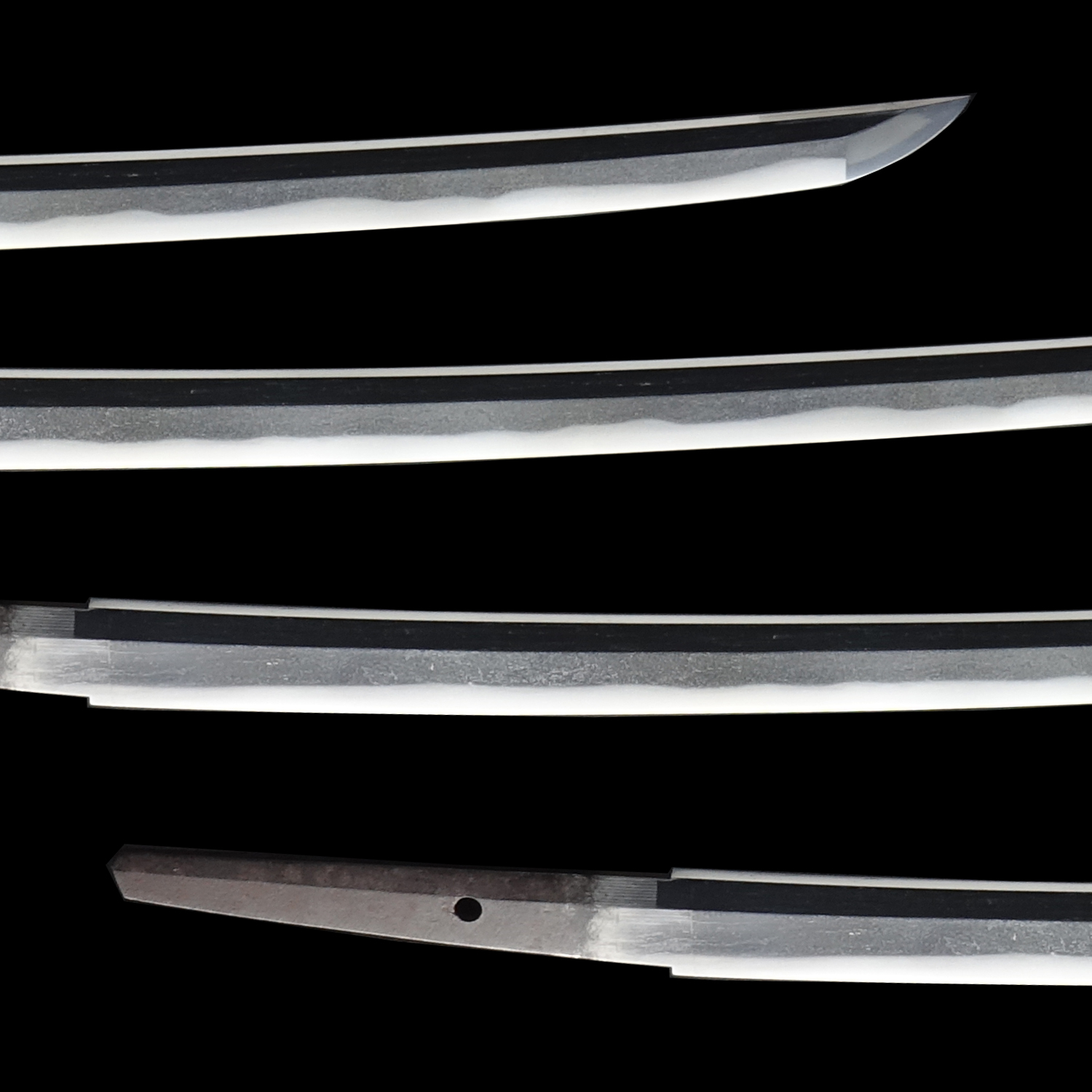
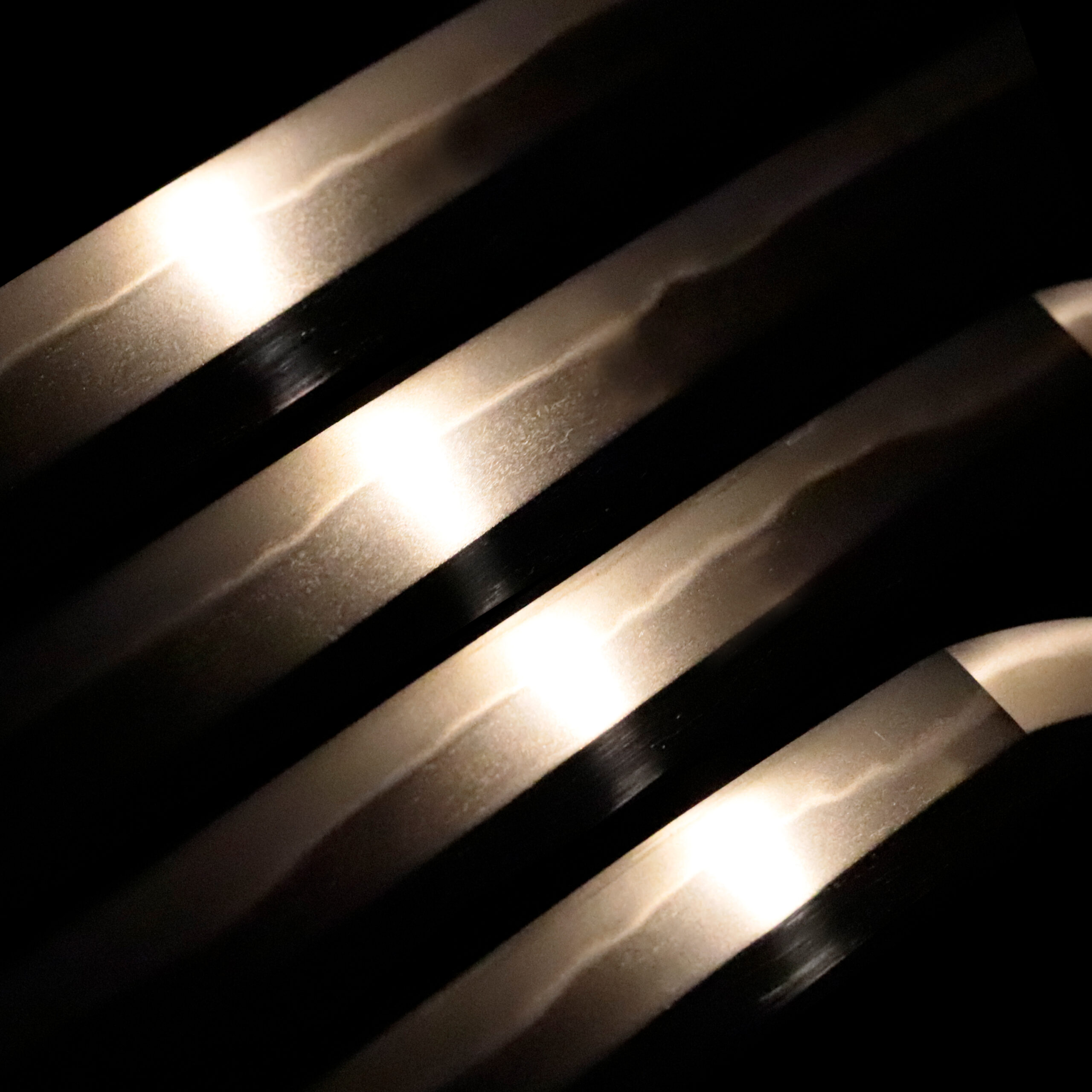
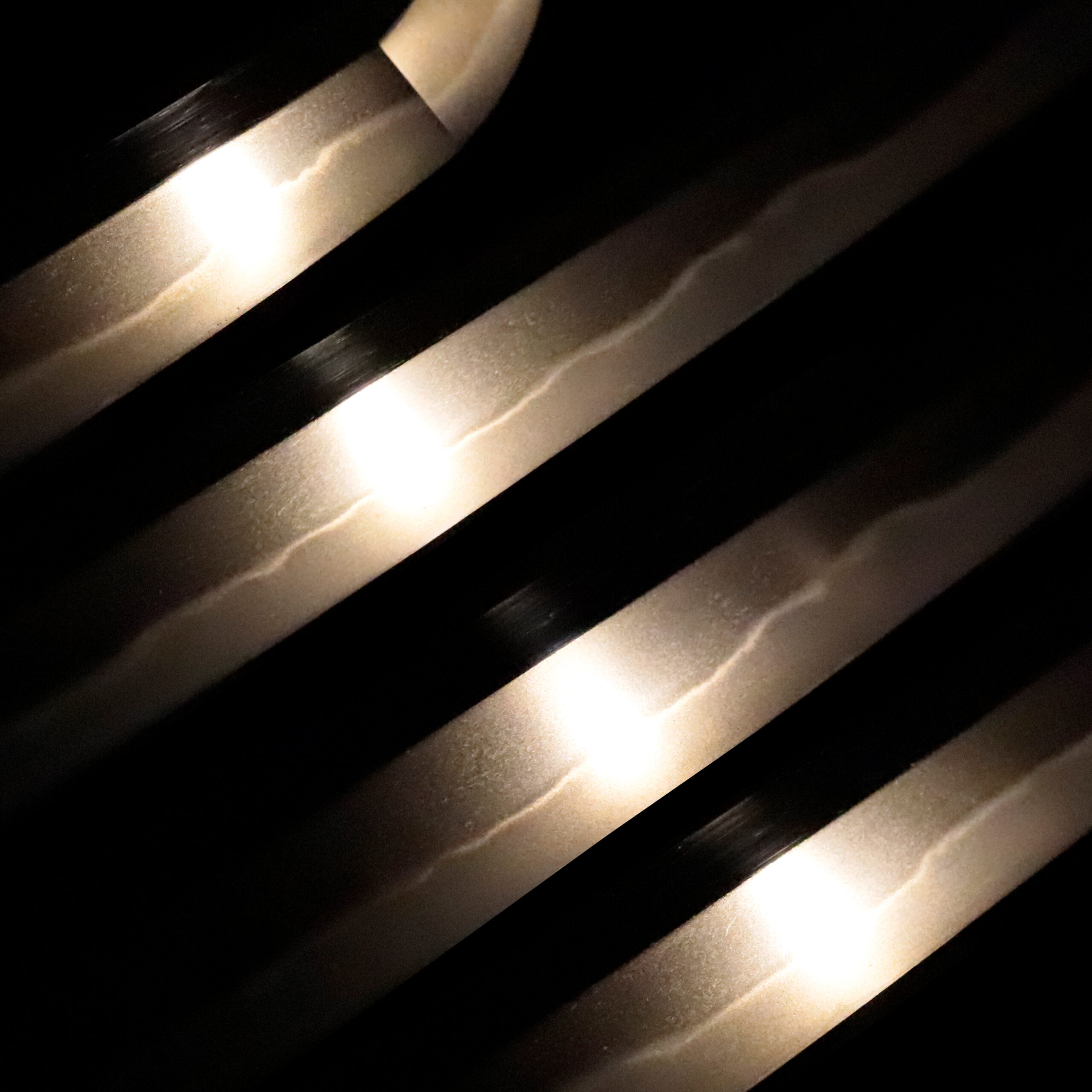
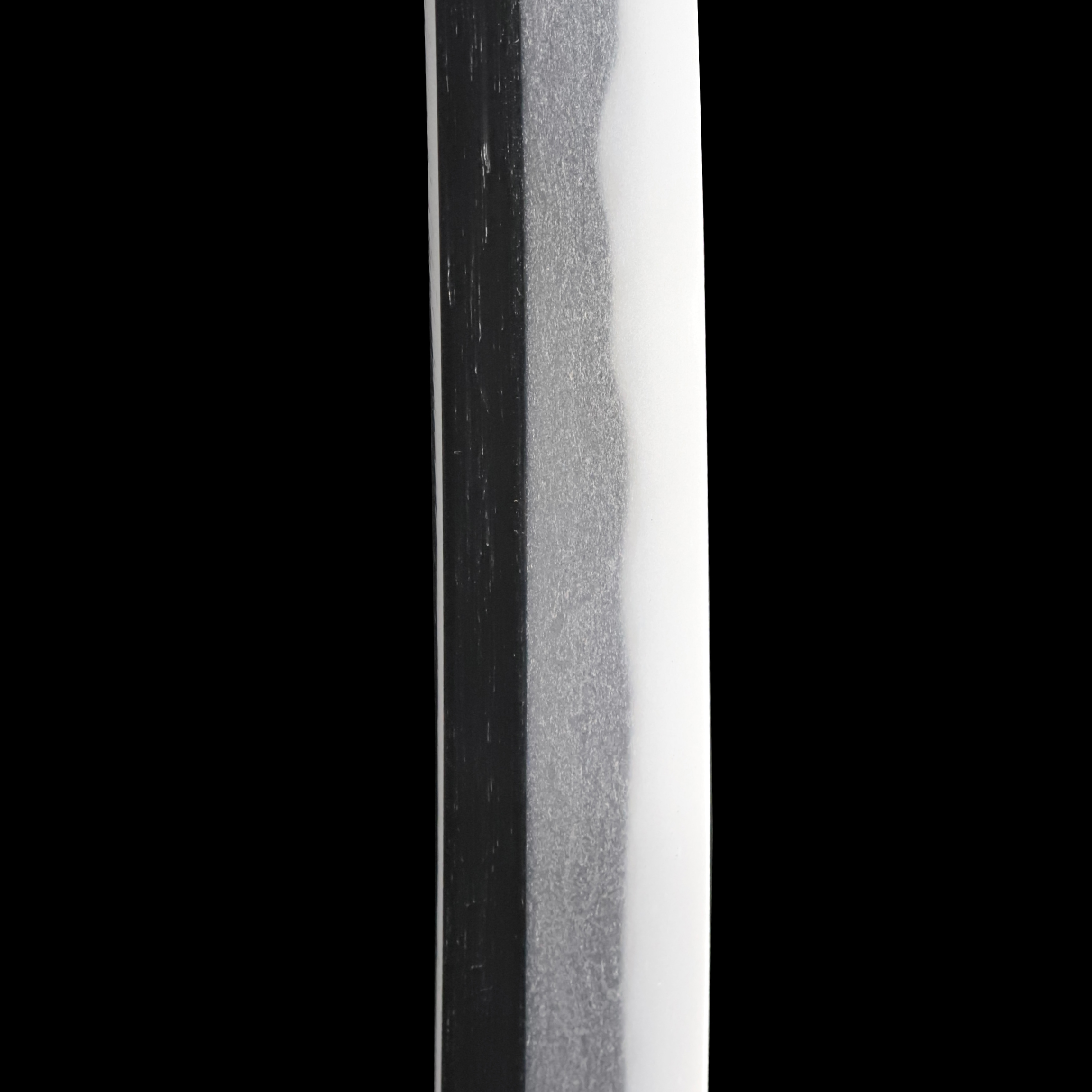
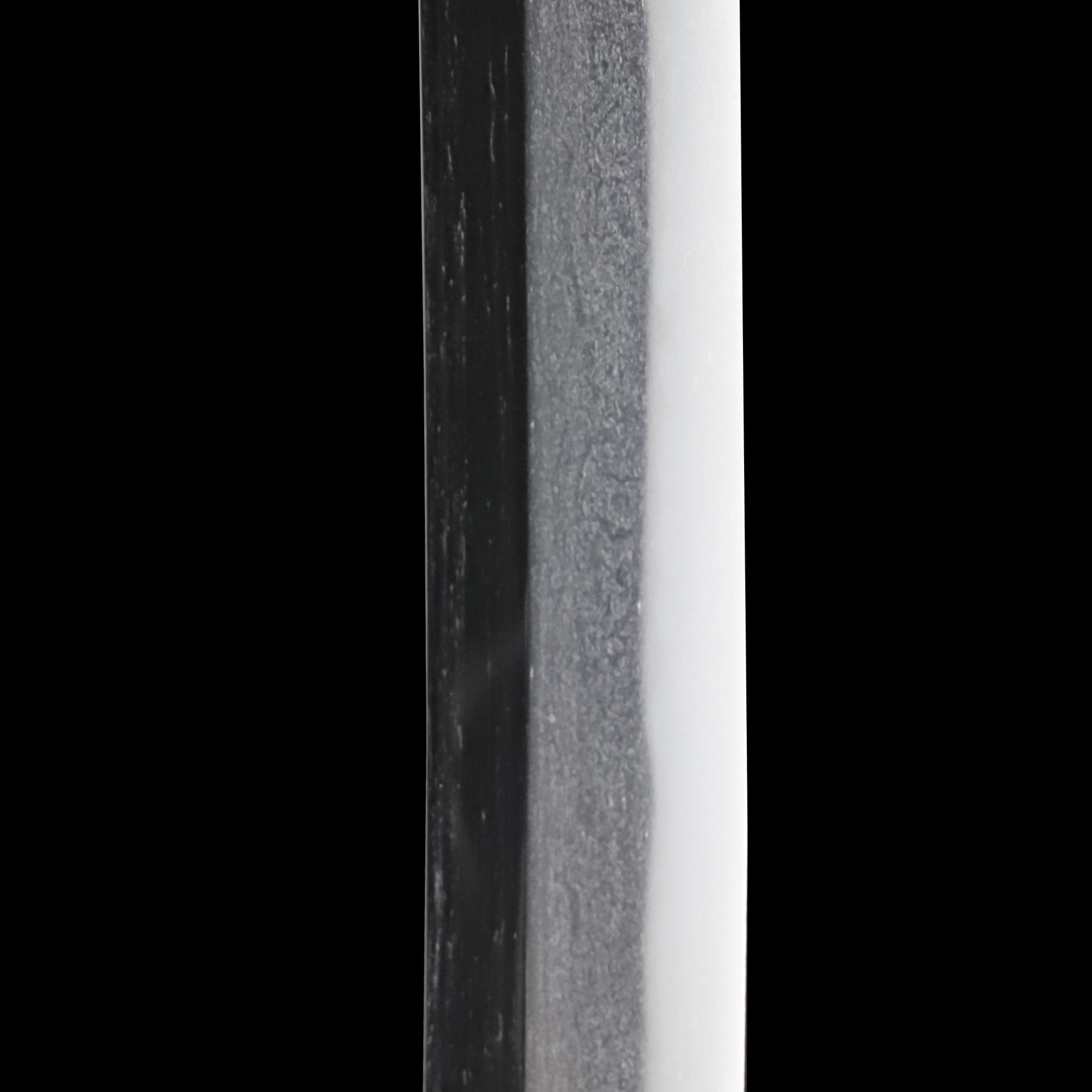
Kissaki: Kissaki is the tip of the Japanese sword.
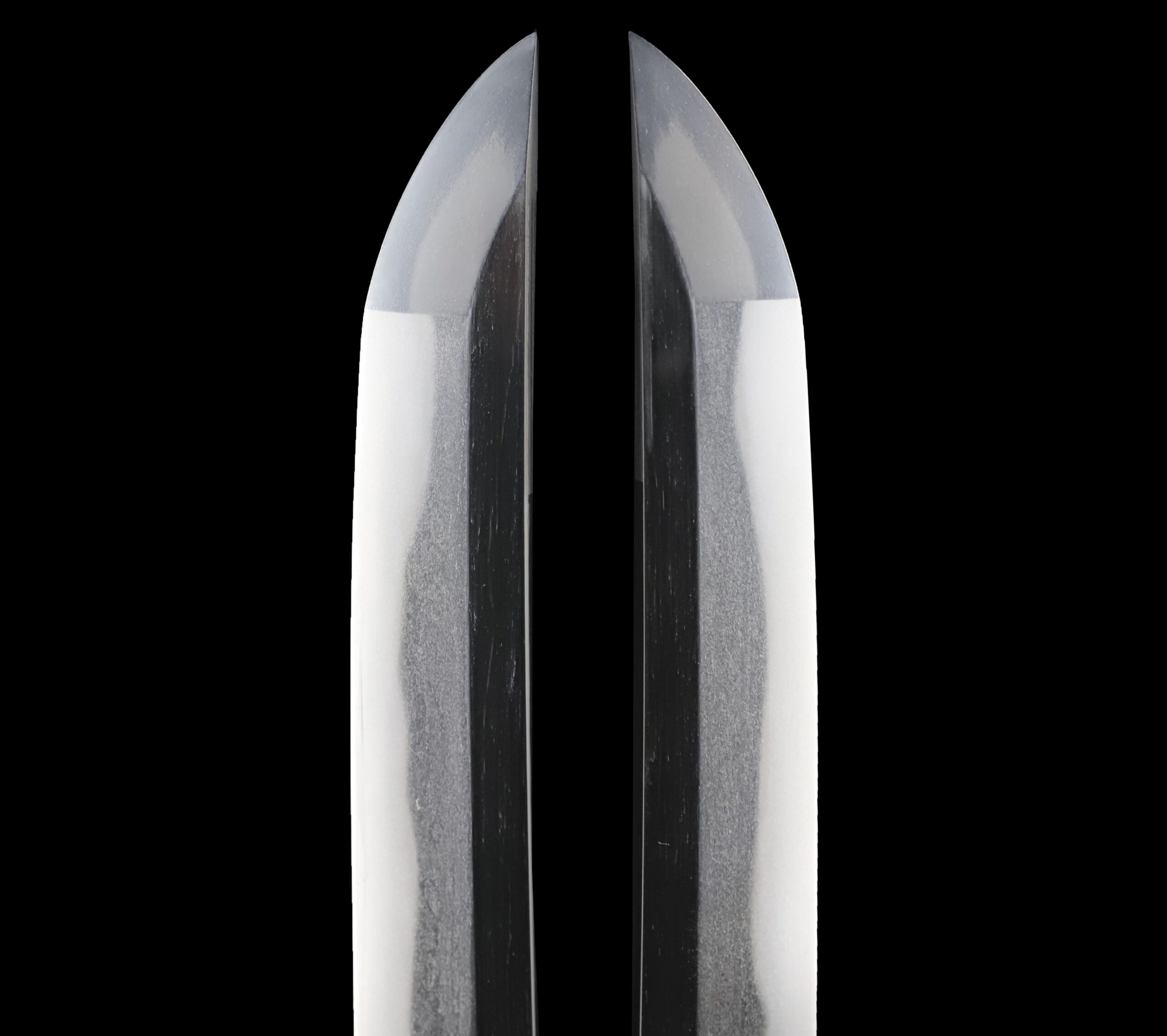
Nakago: Nakago is the tang of the Japanese sword.
Japanese swordsmiths left the black rust on the tang because it prevents red rust while the tang is in its handle. And the discoloration of the tang was created over time, and it is a great indicator for a Japanese sword specialist to estimate when the sword was forged.
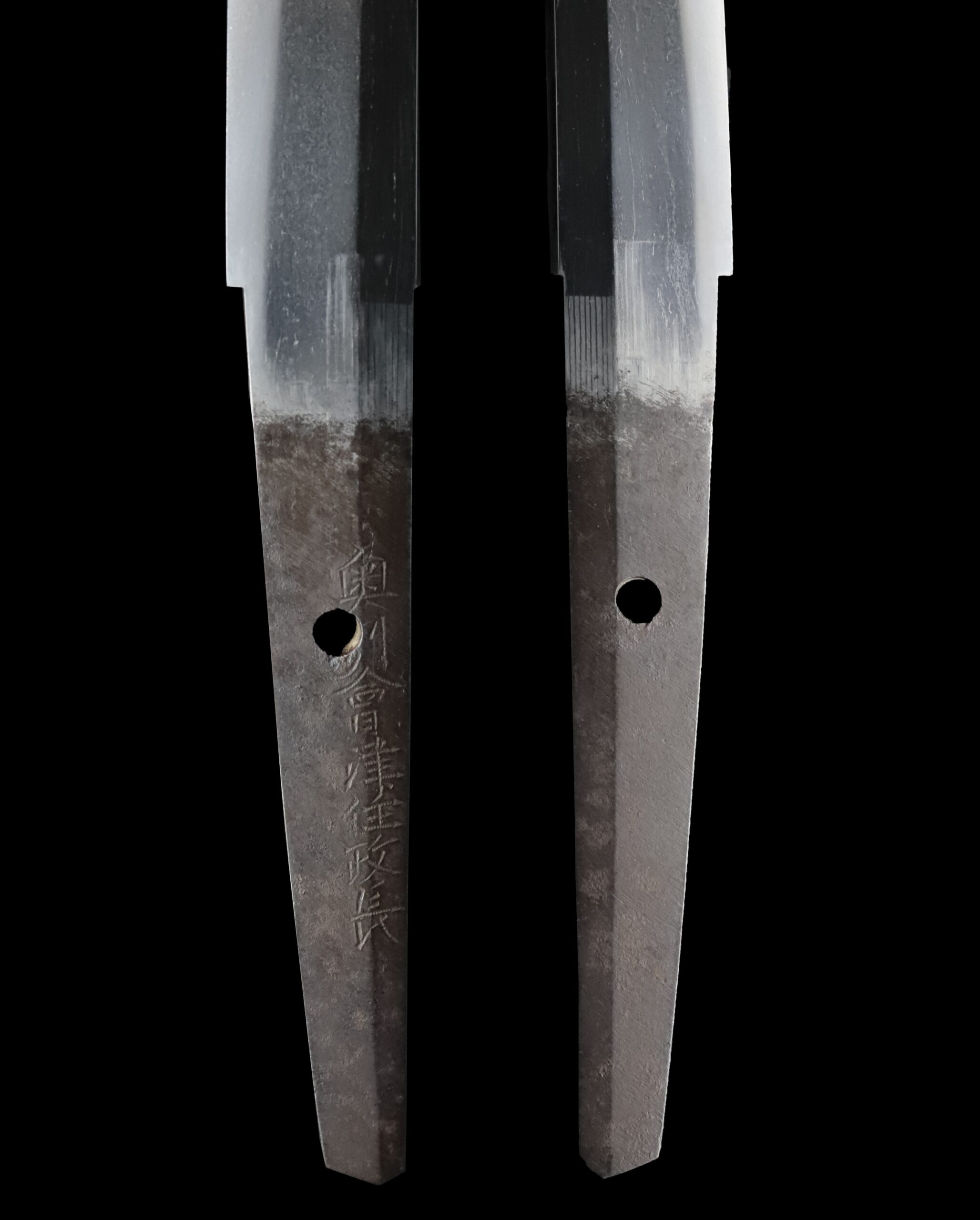
Koshirae:Koshirae is the mounting of the Japanese sword. There are several parts that consist of Koshirae such as Saya (Scabbard), Tsuka (Handle), Tsuba (Handguard).
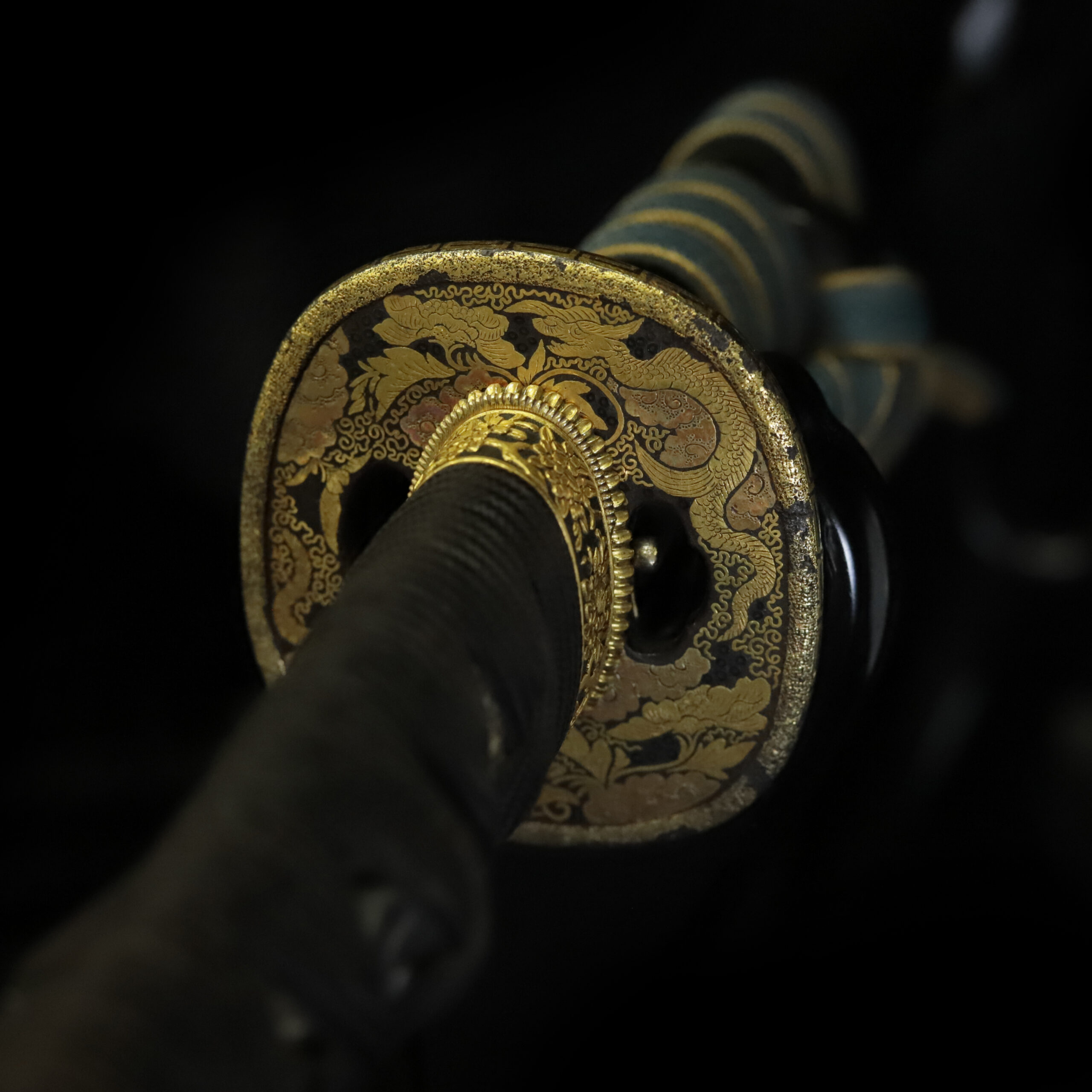
Fuchi-Kashira:A pair of matching sword fittings that cover the upper and bottom parts of its sword hilt.
The theme of this Fuchi-Kashira (hilt collar and pommel cap) is the cherry blossom (桜, sakura), a flower deeply associated with spring in Japan and cherished for centuries. Cherry blossoms are a popular motif not only in sword fittings but also in traditional Japanese attire such as kimono, as well as in a wide range of decorative arts.
According to one ancient belief, the deity of grain dwells within cherry blossoms, making the flower a symbol of fertility and abundant harvest. In earlier times, people gathered beneath cherry trees to pray for good crops — a practice that eventually evolved into today’s custom of hanami, or cherry blossom viewing.
The background of this piece is finished in the Nanako-ji (魚々子地) technique, a traditional decorative method in which countless minute, evenly spaced dots are hammered into the metal surface. This fine, egg-like texture subtly enhances the brilliance of the gold inlay and imparts an air of refined elegance and solemn beauty to the entire piece.
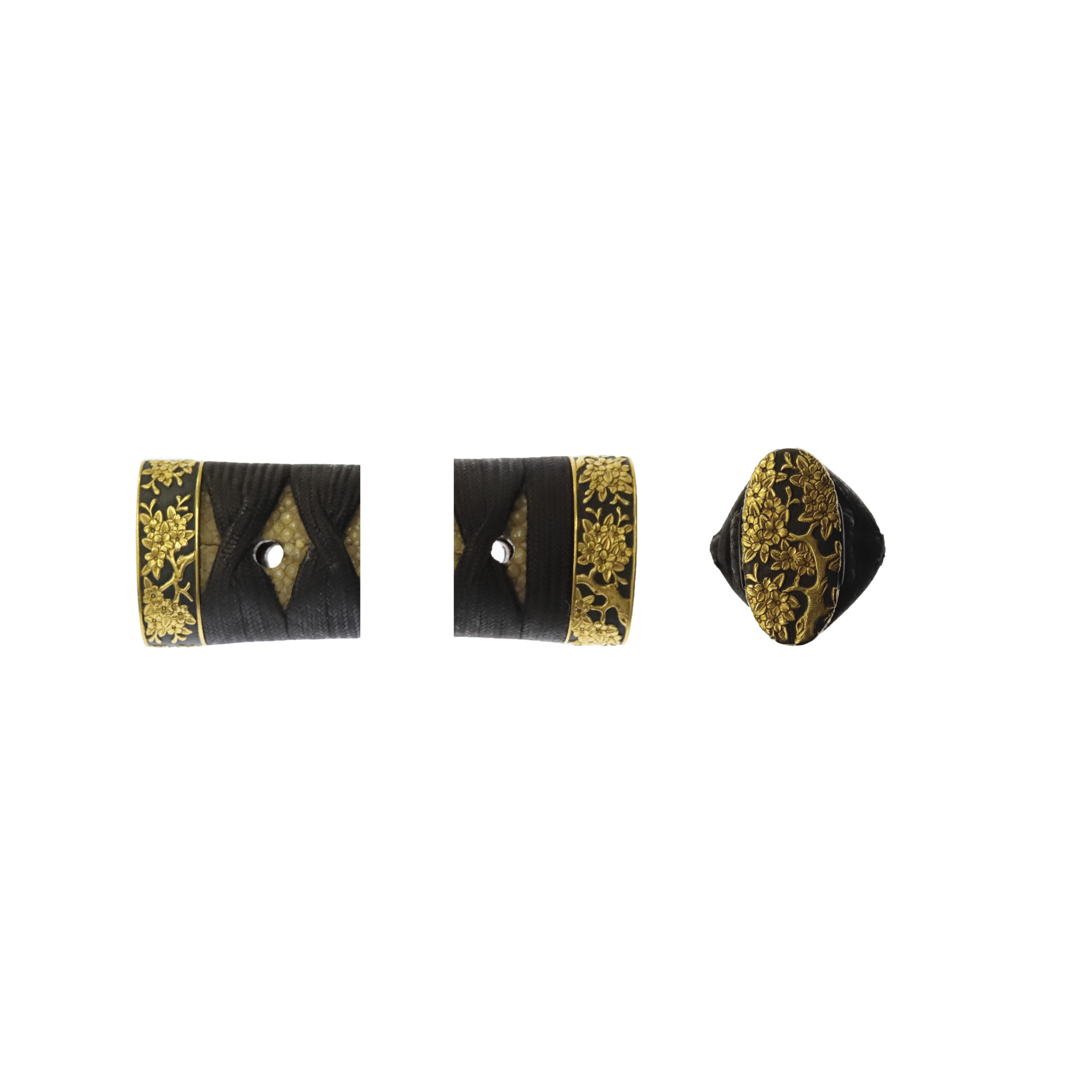
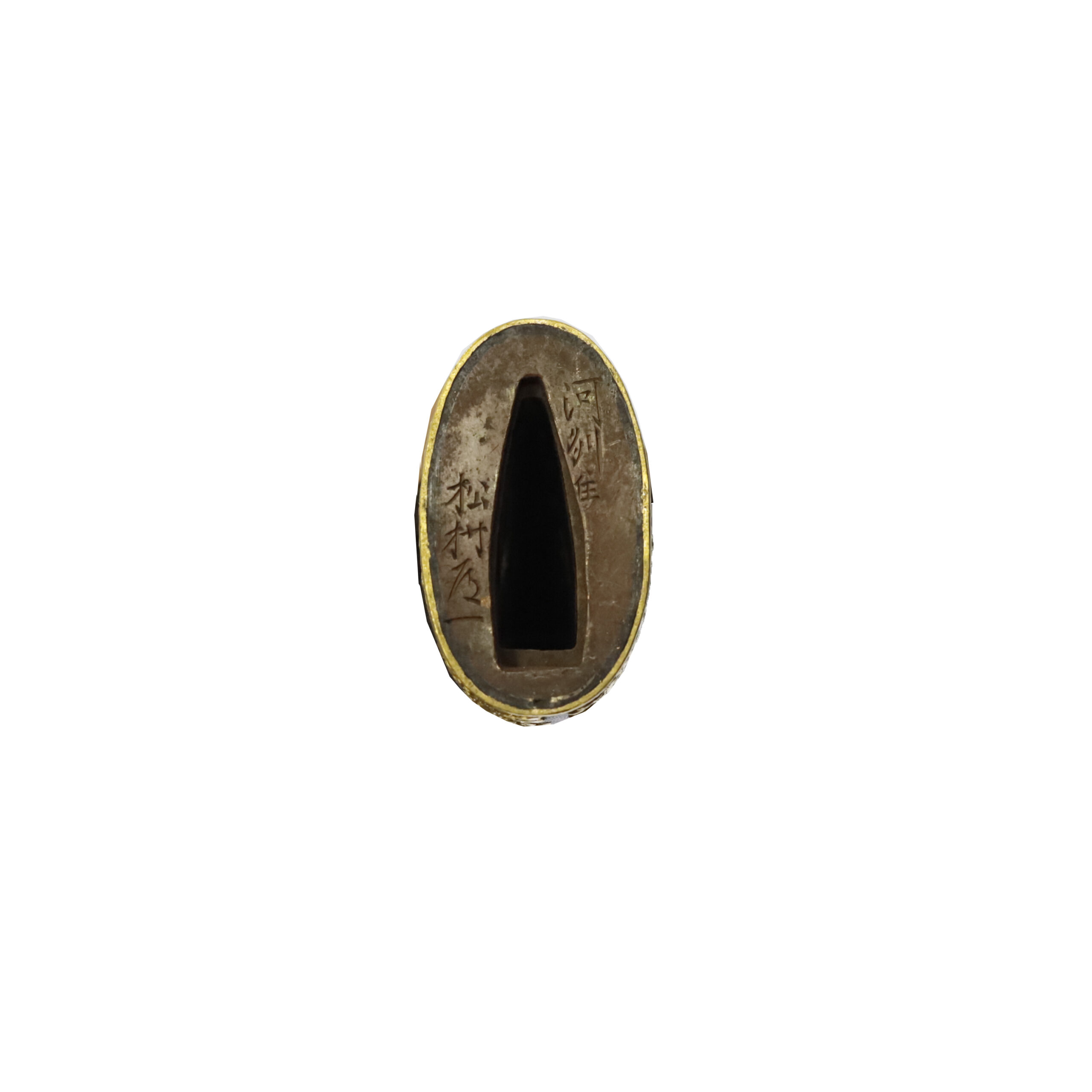
Tsuka and Menuki: Tsuka is the handle of the Japanese sword and Menuki is its decoration.
The motif of this menuki appears to feature a design of mice with mochi (rice cakes). In Japanese tradition, mice are regarded as the messengers of Daikokuten(大黒天), the deity of wealth and prosperity. The image of mice carrying or nibbling freshly made mochi symbolizes good fortune, abundance, and prosperity. Mochi, made from rice, has long been a symbol of fertility and a bountiful harvest, and its pairing with mice expresses an auspicious wish for material and spiritual richness.
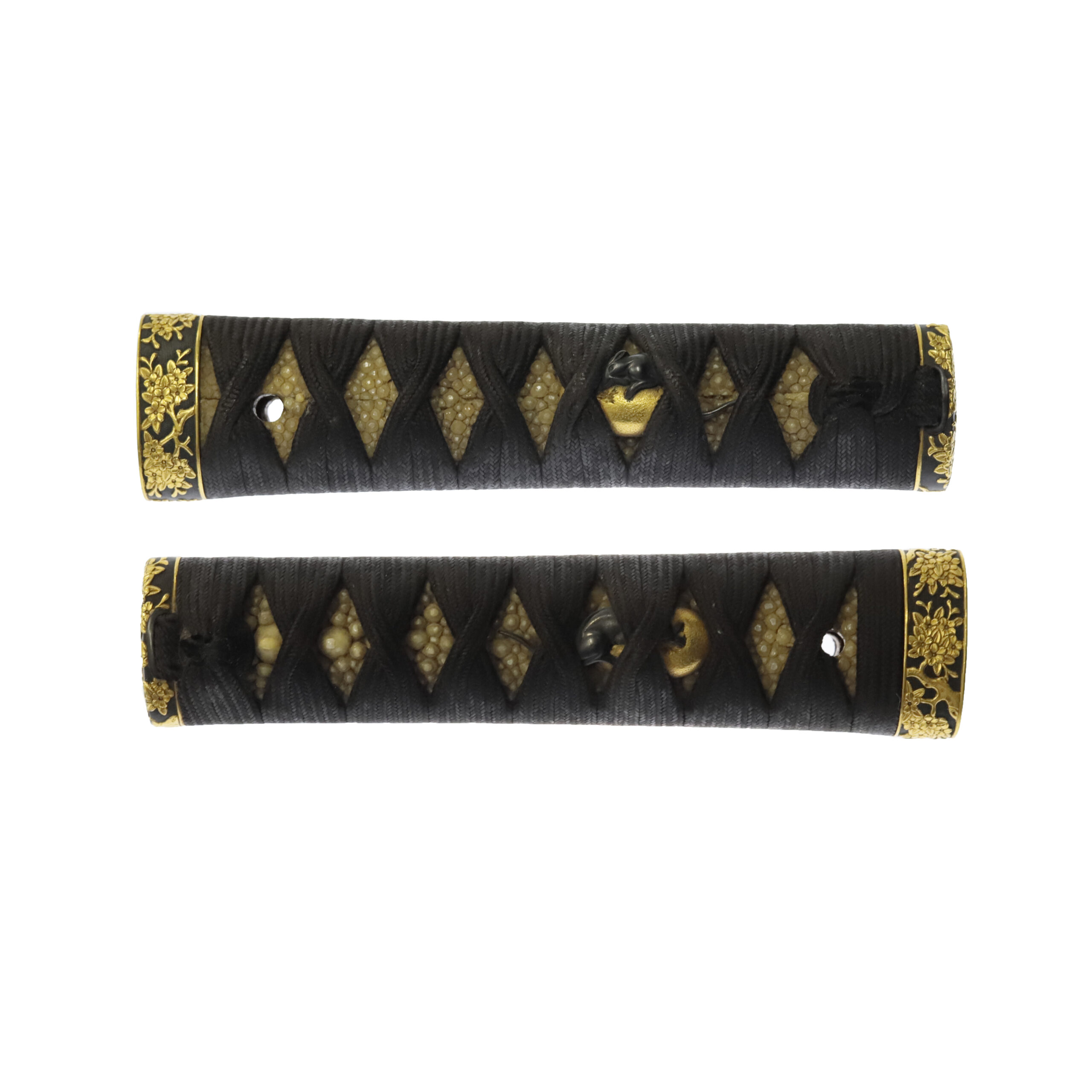
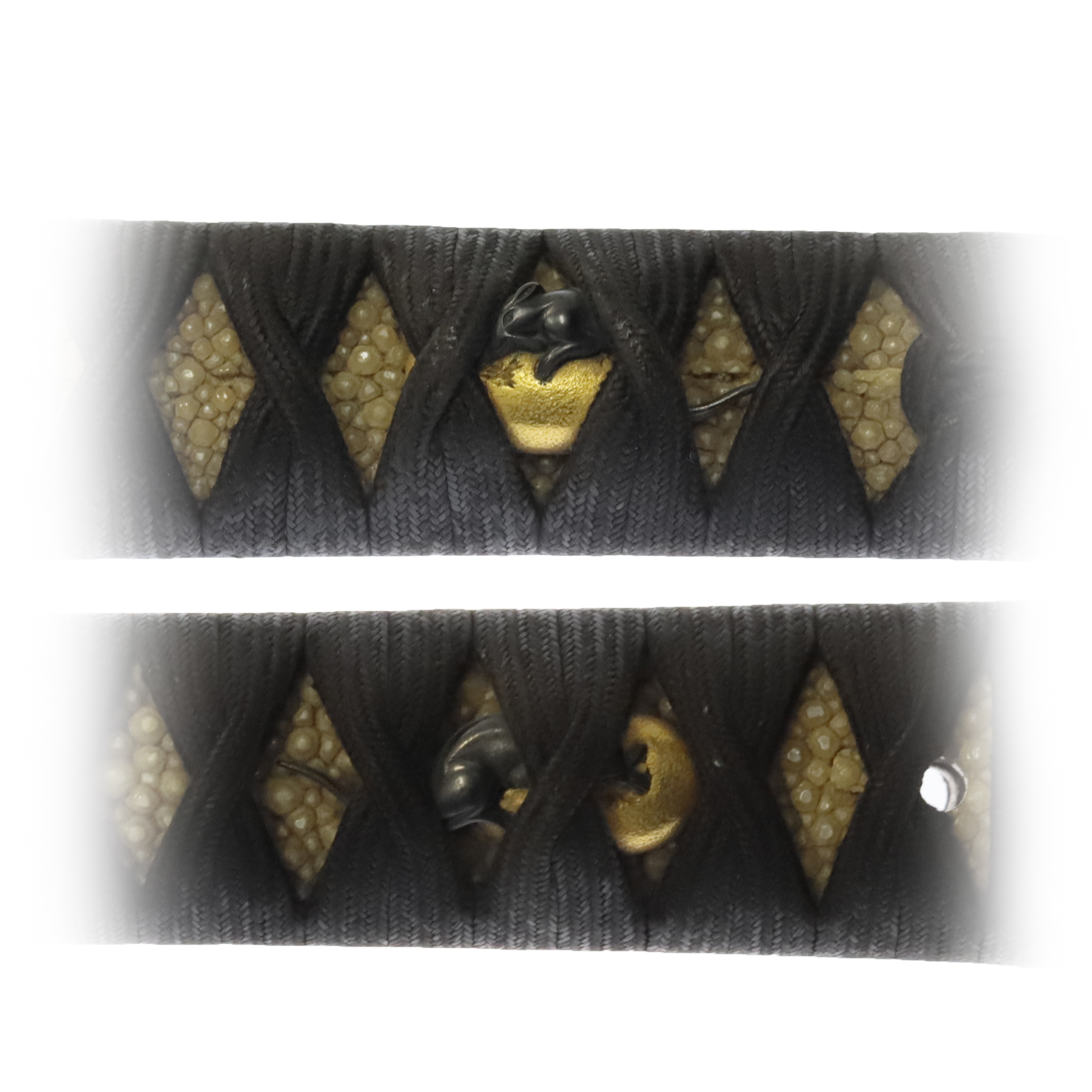
Tsuba and Habaki: Tsuba is the handguard for the Japanese Sword and Habaki is the equipment to make the blade not touch its scabbard inside. It prevents the blade from getting rusty and chipped.
The main theme of this tsuba is divine beasts (神獣, shinjū)—sacred creatures believed to embody spiritual power and to dwell within protective talismans, responding to people’s prayers. The design features three such beings: a dragon, a phoenix, and a fox.
The dragon is among the most revered mythical creatures in East Asia. In Chinese legend, it symbolizes the emperor and celestial authority, while in Japan it is worshiped as a god governing water and weather. The phoenix, a legendary bird said to rise from the ashes, represents virtue and renewal; in China it is the emblem of the empress, and in Japan it is regarded as a powerful symbol of good fortune. The fox, meanwhile, is the most familiar divine messenger in Japan. As the sacred envoy of the deity Inari, it is believed to bring prosperity in business and an abundant harvest, making it one of the most beloved spiritual figures in Japanese folklore.
The rim (覆輪, fukurin) of the tsuba is decorated with a geometric thunder pattern (雷紋, raimon), composed of zigzag motifs resembling lightning bolts. This design symbolizes divine energy and protection from evil. In Japanese tradition, lightning represents the raw power of nature and the presence of the gods—qualities admired by samurai as expressions of strength, vitality, and reverence for the natural world.
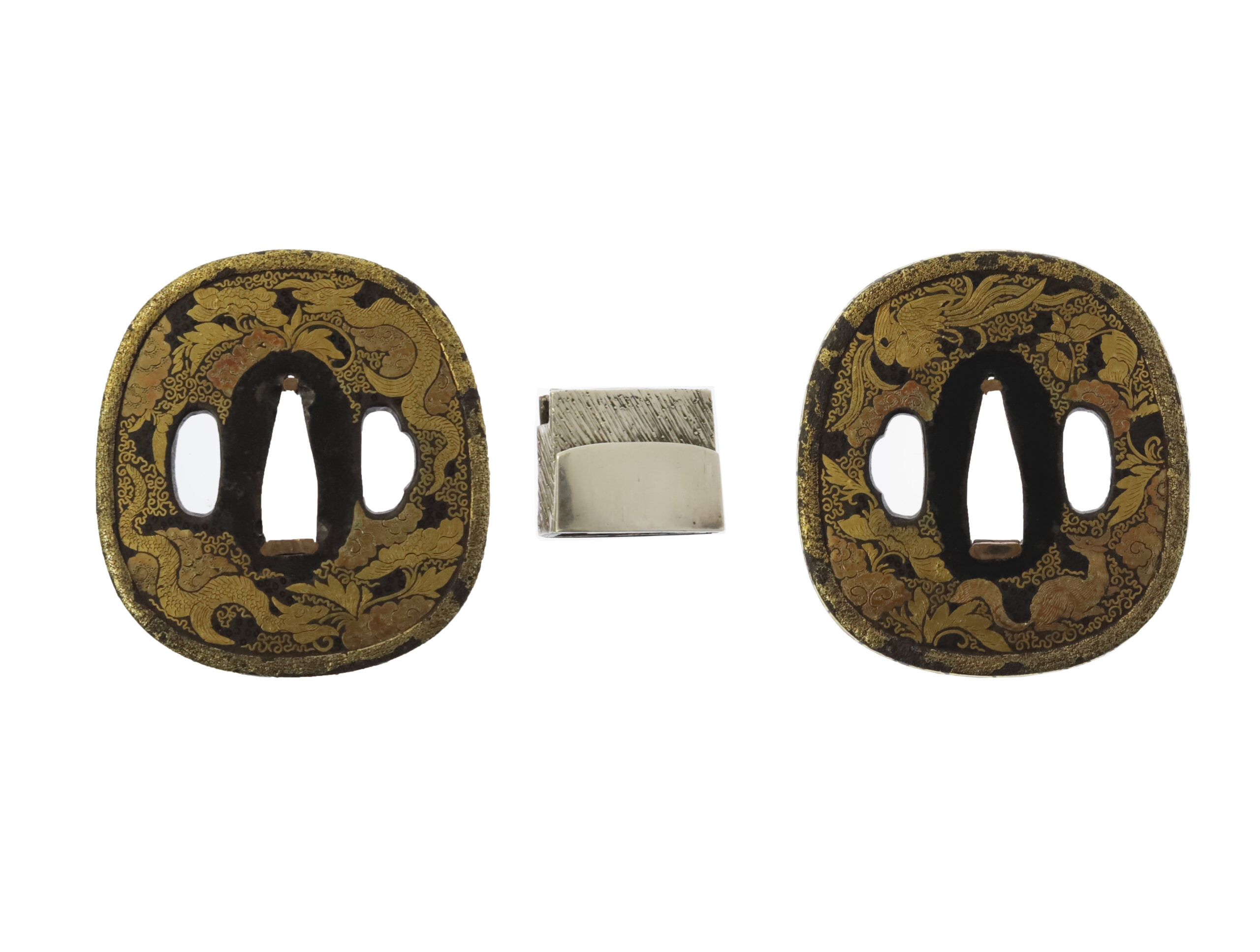
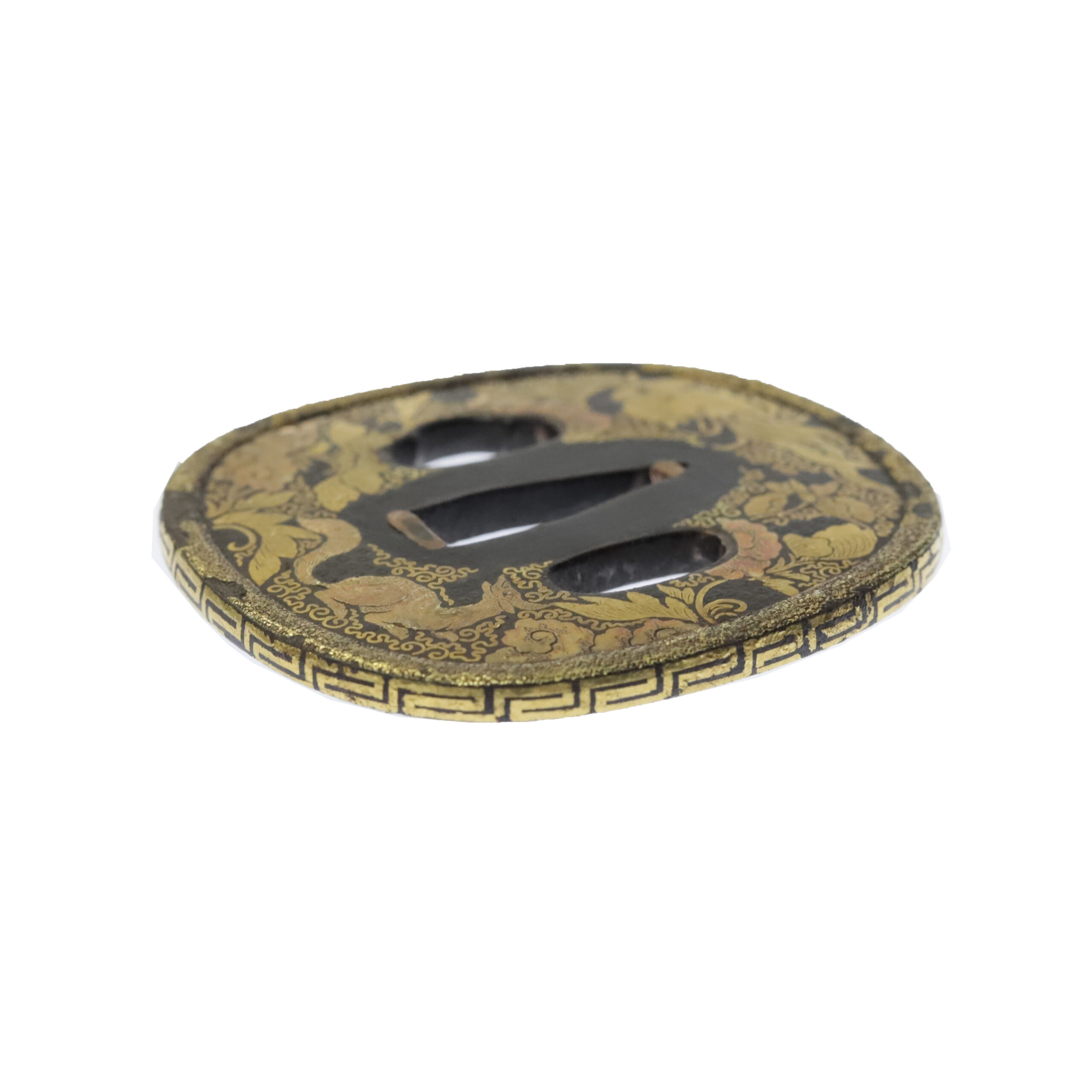
Kougai:Kougai is the equipment for Samurai to arrange or fix his hair style.
The motif depicted on this kougai appears to be a slightly stylized chrysanthemum (菊, kiku), one of the most beloved flowers in Japanese art and culture.
The chrysanthemum has been cherished in Japan since ancient times as a symbol of longevity and purity. It was believed to possess life-prolonging powers and was sometimes used as a medicinal plant. Beyond its practical value, its graceful form and seasonal beauty have long brought comfort and serenity to people’s hearts. For these reasons, the chrysanthemum continues to hold a special place in Japanese aesthetics, representing both refined elegance and enduring vitality.
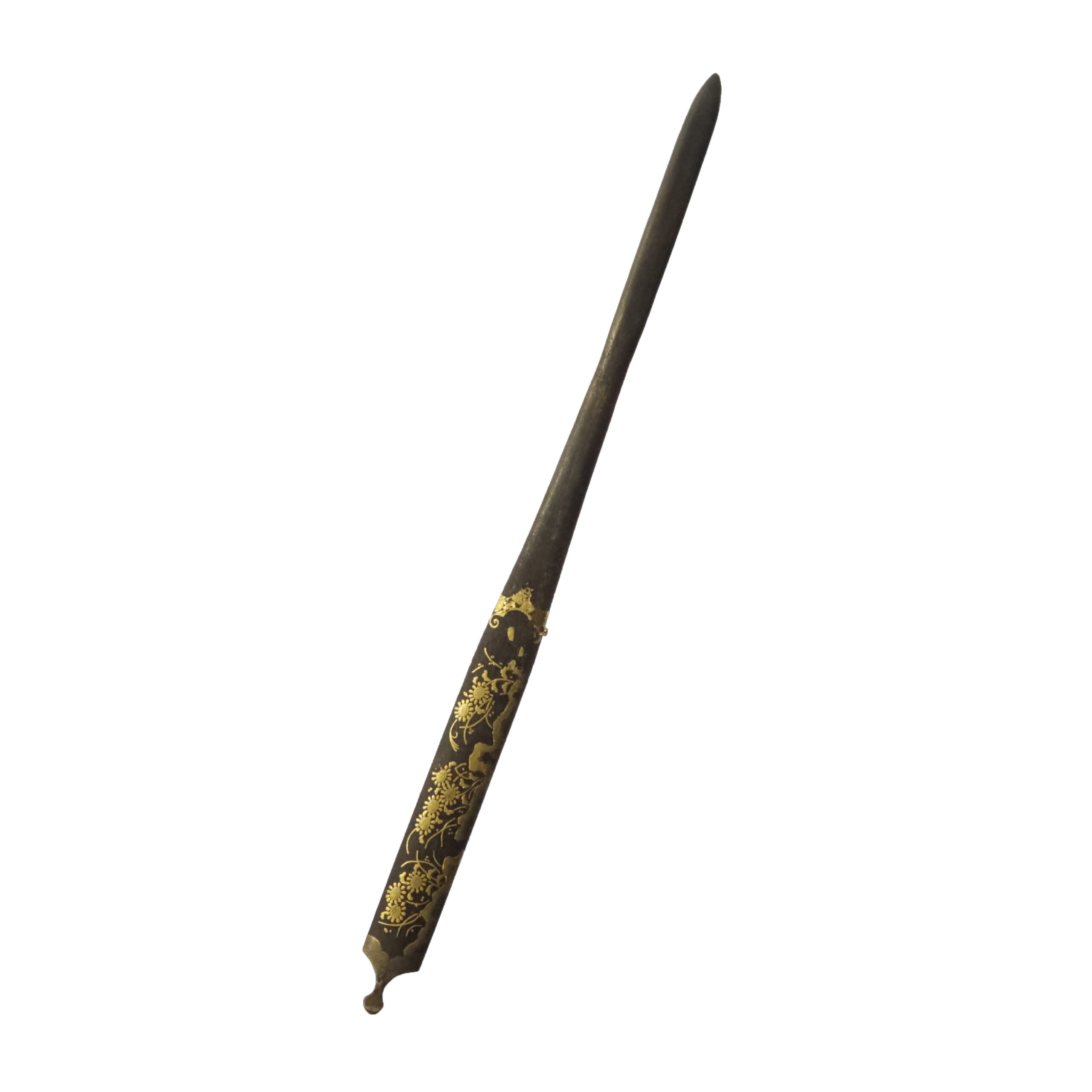
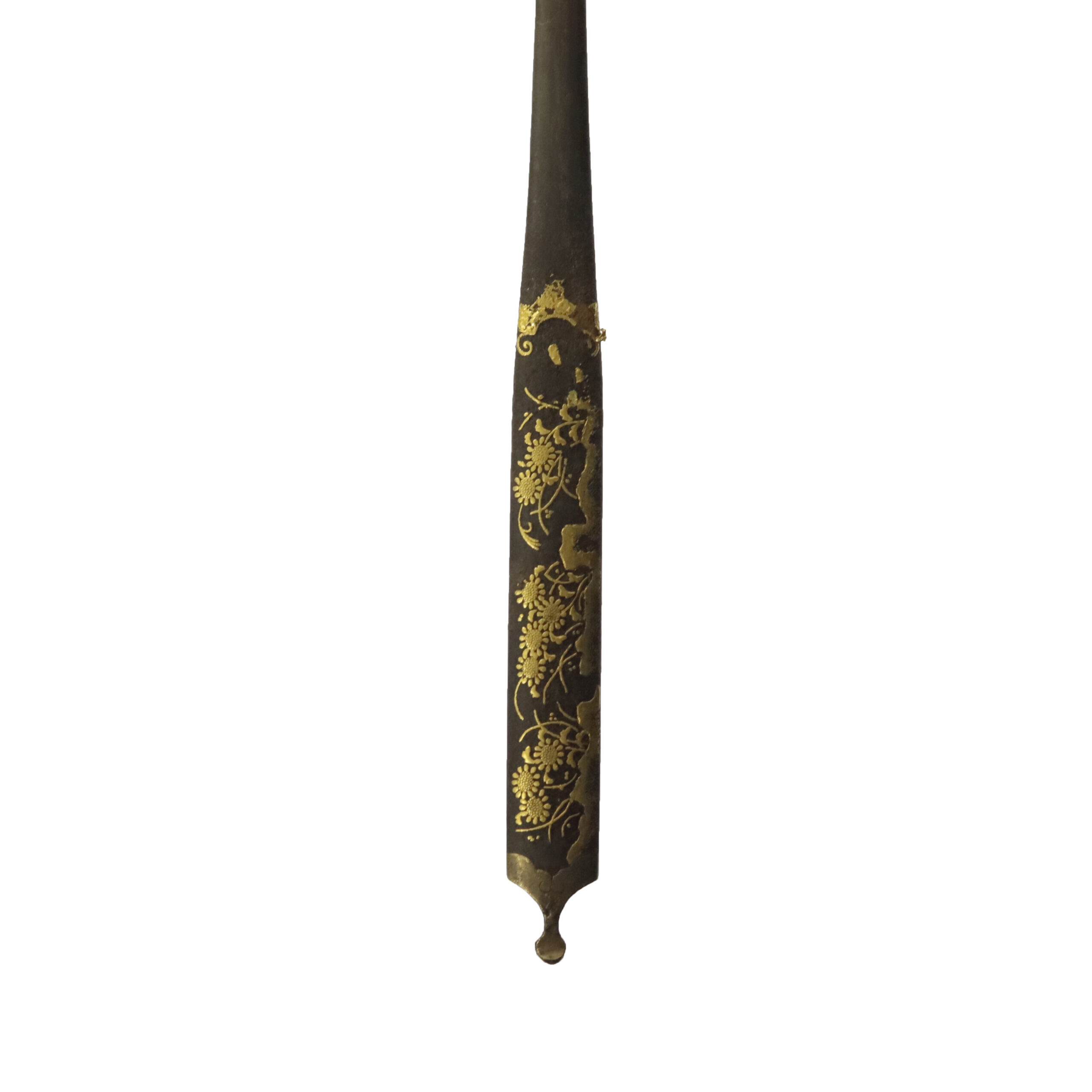
Saya: Saya is the scabbard for the Japanese sword.
This Saya is covered with black lacquer. Due to its high waterproof effect, lacquer has been used since ancient times in Asia. The blade of a Japanese sword is made of iron, and moisture is the greatest enemy of iron. For the purpose of carrying the blade without degrading it, people devised a method of coating the scabbard with lacquer. To prevent not only moisture but also rain and snow from penetrating the inside of the scabbard, it was necessary to apply multiple layers of lacquer. The Nushi (塗師, lacquerers) was born precisely because advanced techniques were required to handle the complicated processes.
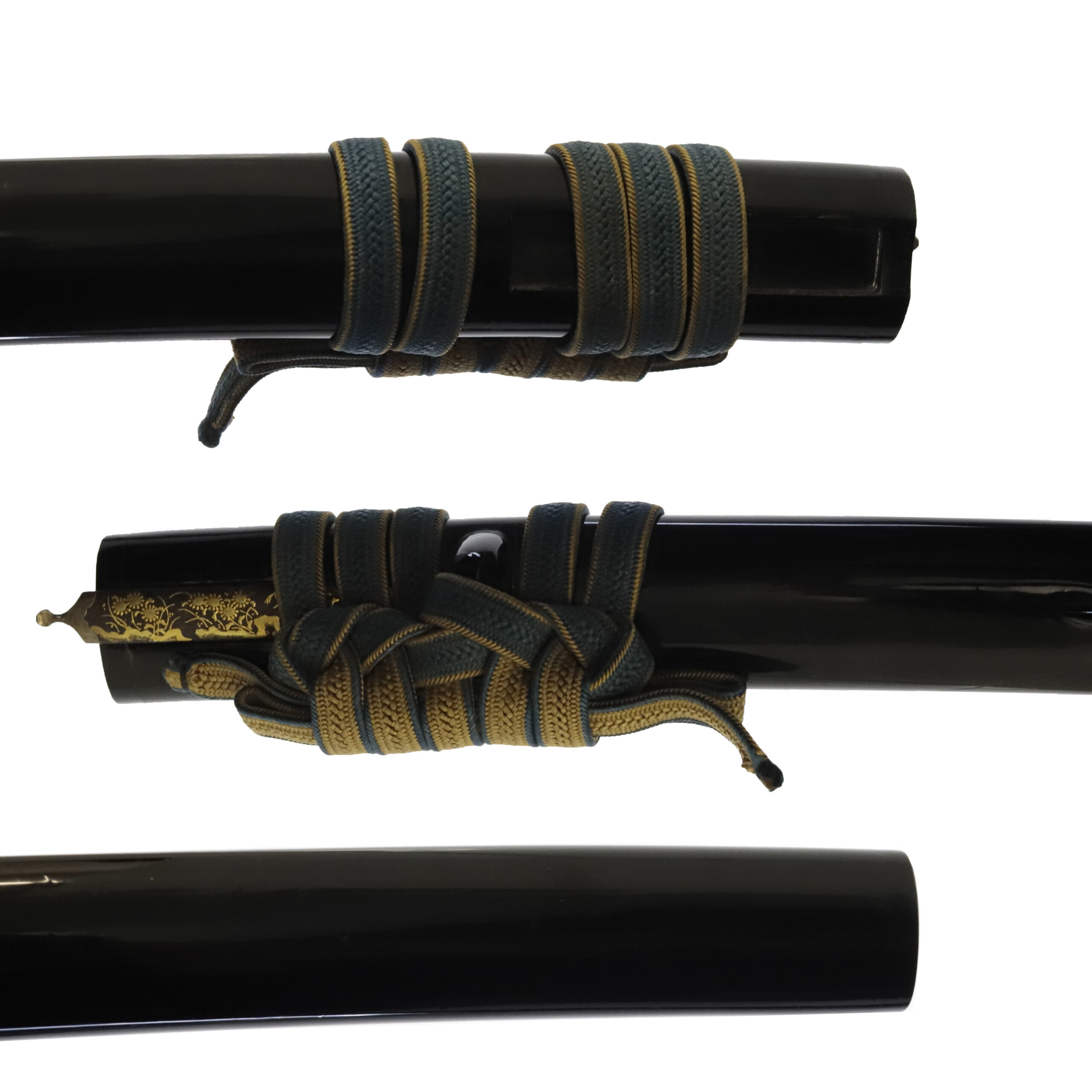
Authentication Paper: NBTHK TOKUBETSU Hozon Certificate for the blade (No. 1024649)
NBTHK, also known as Nihon Bijutsu Touken Hozon Kyokai (the Society for the Preservation of the Japan Art Sword), is one of the oldest Japanese sword appraising organizations in modern-day Japan. They authenticated the blade on May 28th in the 7h year of Reiwa (2025). They appraised it as Tokubetsu Hozon Touken, the blade especially worth preserving for Japanese society. The purchaser will receive this original certificate as well. We can also translate what is written into English and make a PDF file for your record if you request.
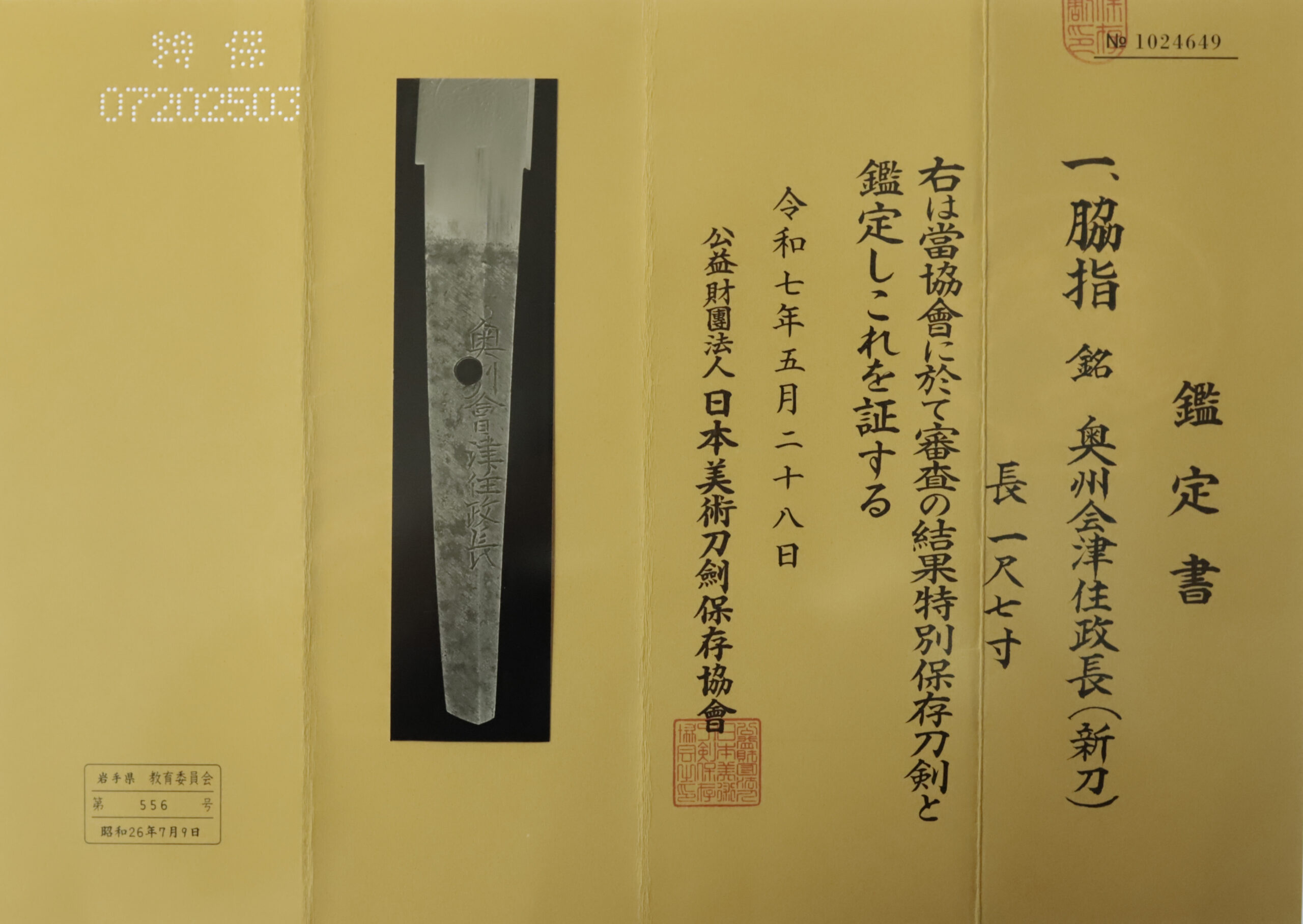
Registration Number: Iwate 556
The Board of Education in Iwate prefecture issued a registration paper for this sword . It is called Jyu Hou Token Rui Tourokusho (銃砲刀剣類登録証). Bunkacho (The Agency for Cultural Affairs) acknowledges a Japanese sword with this paper as a work of art.
The sword needs to be traditionally hand-forged and made of Tamahagane carbon steel to be registered in the system. With this paper, its owner in Japan can legally own an authentic Japanese sword. Based on this registration number, we will apply for its export permit.
This paper will need to be returned to the board of education when the sword is being shipped abroad, but you can receive a copy of it. An English translation of this registration paper is available on request.
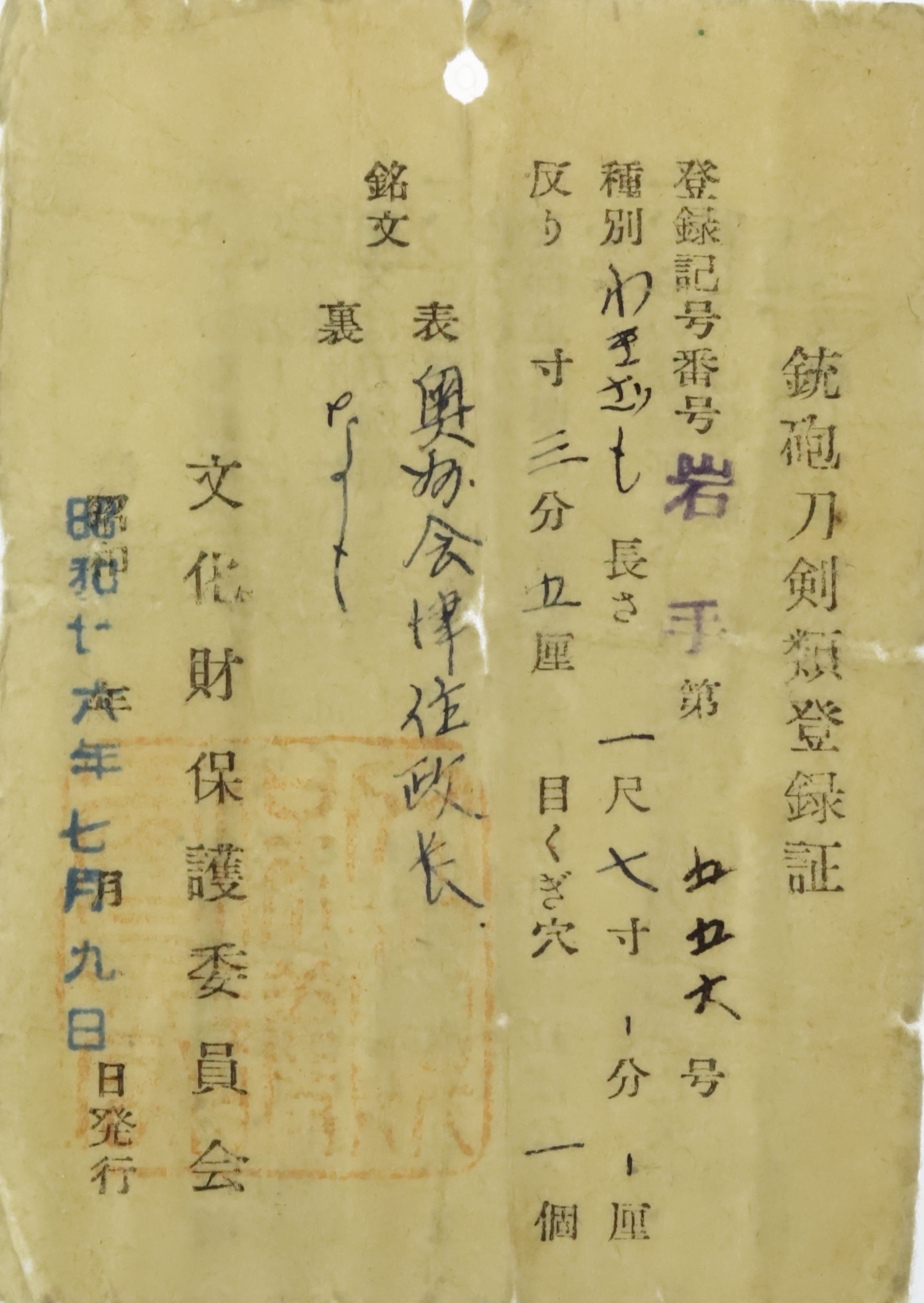
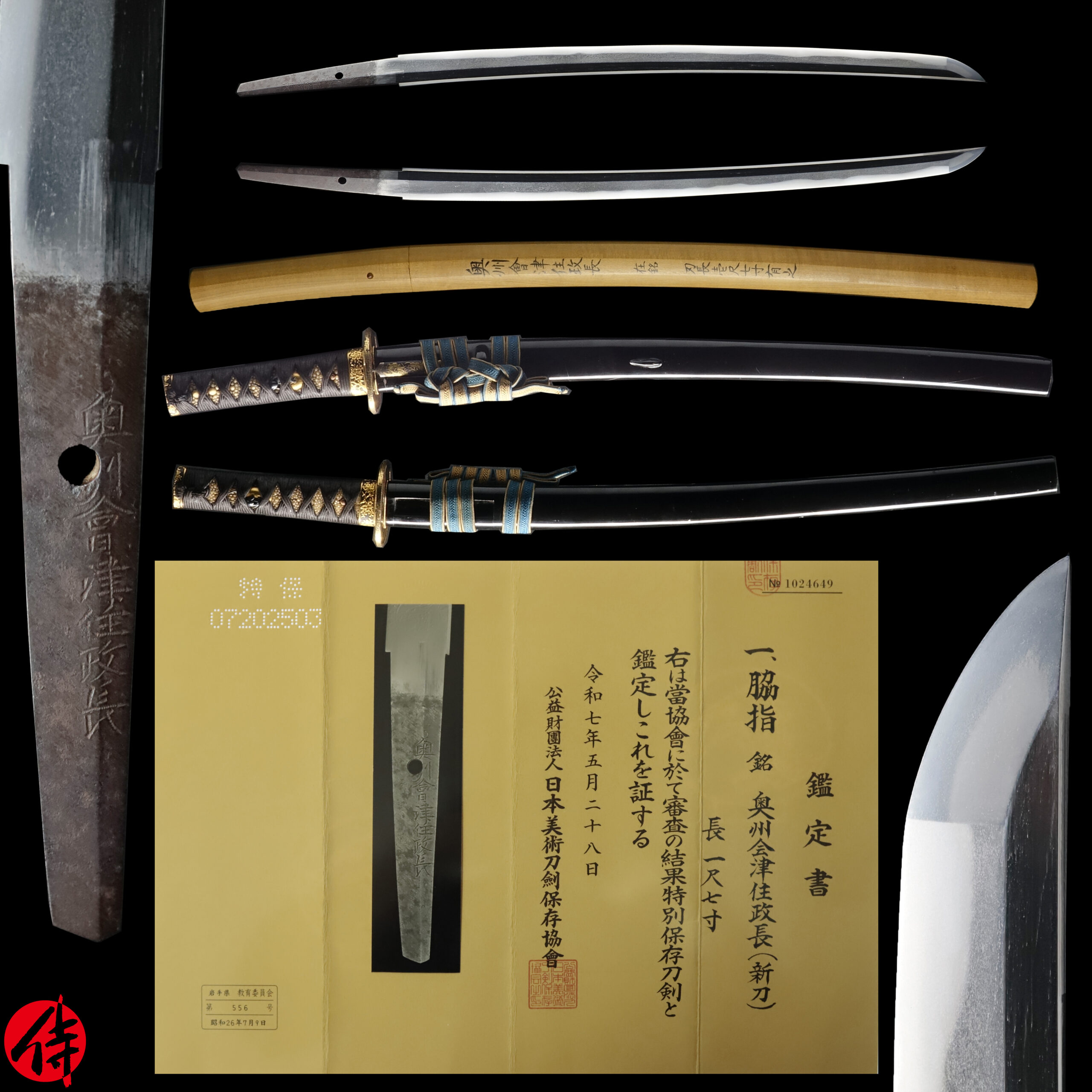
【About us】
Samurai Museum is located in Tokyo, Japan, exhibiting antique artifacts related to the Samurai history. Samurai Museum Shop is the place for those who are interested in Japanese culture and craftsmanship. We deal with antique Samurai swords/armor, traditional crafts made in Japan and so on.
【Japanese Sword& Export Process】
The Japanese swords we deal with are hand-forged edged swords made in Japan. It was made from the traditional carbon steel called TAMAHAGANE(玉鋼). Samurai Museum is familiar with the proper legal procedure for an antique/ authentic Japanese sword to be exported from Japan. We have sent more than 1000 Japanese swords for the past few years (~2025) to amazing owners who appreciate its historical value.
Each Japanese sword is registered under the Agency for Cultural Affairs and the Board of Education in Japan. They issue a registration paper for each Japanese sword for its owner in Japan to legally possess it. The Japanese sword with its registration paper means it was traditionally hand-forged in Japan.
To legally export the sword from Japan to other countries, we will have to apply for its permit to the Agency for Cultural Affairs(Bunkacho) and return the original registration paper to the Board of Education. It normally takes around 2-4 weeks to receive this permit after submitting required documents. And we would like you to expect at least 1-1.5 months for your order to arrive at your given address after you ordered. For more detailed info, please click here.
It is allowed for residents in Japan to own authentic Japanese swords without a special license as long as they come with registration papers. Please feel free to contact us if you are a resident of Japan, whether temporarily or permanently. We will also assist you when you leave Japan and need to obtain the export permit.
【Payment Method】
We accept payment through Stripe (Credit card), PayPal, Apple Pay or ChromePay, all of which are secure payment methods. Also, you don’t need to make an account on Stripe for the checkout. If you prefer other payment method, please contact us. After confirming your payment, we will apply for an export permit. You may either pay in JPY, USD, AUD, CAD,EUR CHF or GBP. The price is set in Japanese Yen. Prices in other currencies are automatically calculated based on the latest exchange rate.

* If the amount is above 1 million JPY, Stripe or wire transfer will be the only options for payment.
【Shipping】
We have shipped authentic Japanese swords to the USA, UK, Canada, Mexico, Germany, France, Hong Kong UK, and Australia. If you don’t live in these countries and like to order, please contact us first before making a purchase. We offer Free International Shipping as long as we can send antique Japanese swords by EMS.
We normally ship by EMS(Express Mail Service) provided by Japan Post. We will send you a tracking number for your order as soon as we hand it to the post office. We will put 100 % insurance on the shipping document without any extra charge. Based on the total amount, there might be a duty tax or other fee for you to pay, depending on the countries. We use package cushioning to protect the item and put it in a PVC pipe, which is one of the most secure packages because of its durability.
It will normally takes 5-14 days for the item to arrive at your given address after we dispatch it. Time of delivery is estimated as accurately as possible by the carrier but does not take into account any delays beyond our control such as by inclement weather, post office holiday seasons.
* If you live in Australia and like to purchase an authentic Japanese sword, please click here to know the detail.

【Review】
Here is one of the reviews we received from a customer who purchased an authentic Japanese sword from us. For more reviews, please click here.
“My experience overall with the whole process was wonderful. I had many questions about the history and process to purchase these treasures. All my questions were answered very timely and complete. The staff is very knowledgeable and very well versed if any questions do arise.”
【How to make sure the condition】
Please keep in mind that what you are going to purchase is an antique item. We uploaded high resolution photos for you to check its condition thoroughly. If you like to see more photos with different angles, please feel free to contact us. We will be happy to send them to you so that you can make informed decision. It is essential for us to know that you are happy with your choice of a sword. and we are prepared to use the best of our ability to serve you.
【How To Contact Us】
Please contact us through email, Facebook Messenger or Live Chat if you have any questions. You can find each icon on the right side of the website. Please click one of them to reach us. We will reply to you within 1-2 business days.
【The Art of Nihonto (Japanese Sword)】
Samurai’s history is a profound, eloquent legacy of ancient Japanese warriors in which millions of people worldwide are being fascinated. If you like to find out the art of Nihonto, please click here.
【A Guide to Japanese Sword Maintenance】
After acquiring an genuine Japanese sword, it is also important to know how to take good care of it. Here is the special video for you. Mr. Paul Martin, Japanese sword expert, shows you how to give proper maintenance to your sword. By mastering how to clean the Japanese sword, its aesthetic beauty will last forever.
When you purchase a Japanese sword from us, you can get a Free Japanese sword maintenance kit. It comes with four tools(Choji Oil, Uchiko Whetstone Powder, Peg remover, Oil Applicator). By watching the video instruction above , you can enjoy learning how to maintain your Japanese sword while appreciating it. If you have any difficulty assembling the sword or cleaning the blade, you can feel free to contact us.
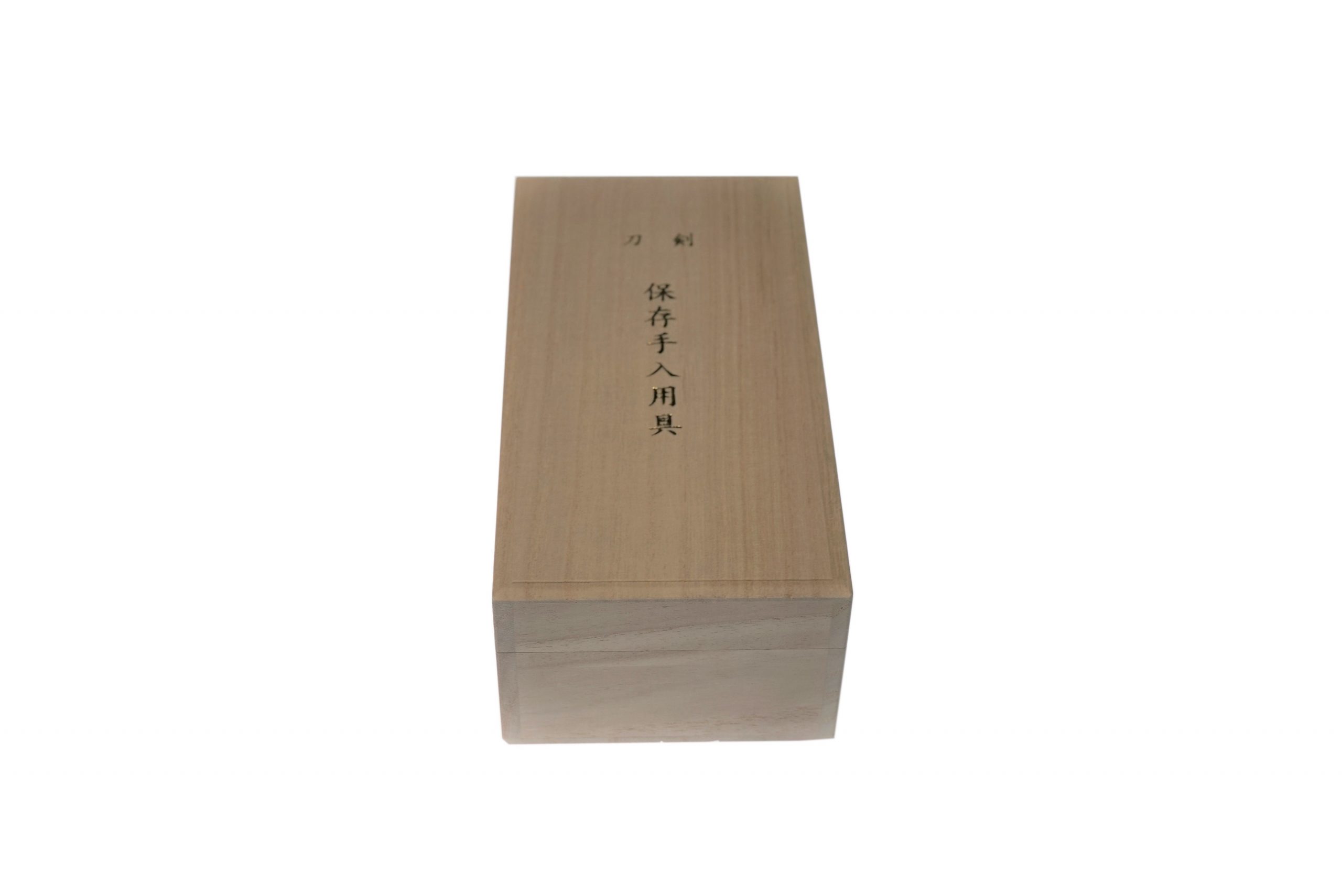
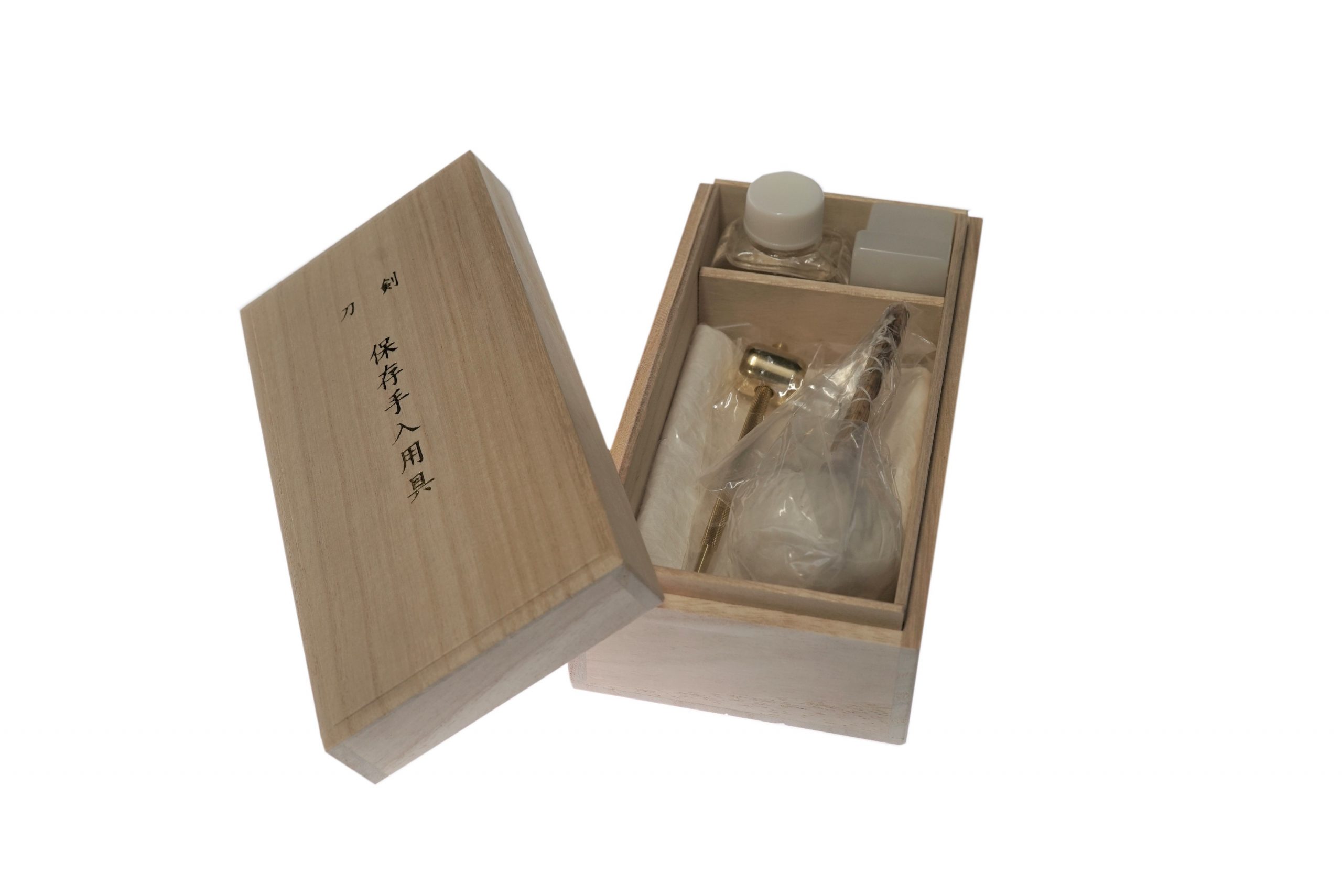
MORE ANTIQUE JAPANESE SWORD FOR SALE
SWORDS WITHOUT CERTIFICATES FOR SALE
LEARN JAPANESE SWORD TERMINOLOGY
Thank you for reading all the information on the page. If you have any difficulty choosing the right Japanese sword for you, we will be more than happy to help you find the one that speaks to you the most. Please feel free to contact us.
